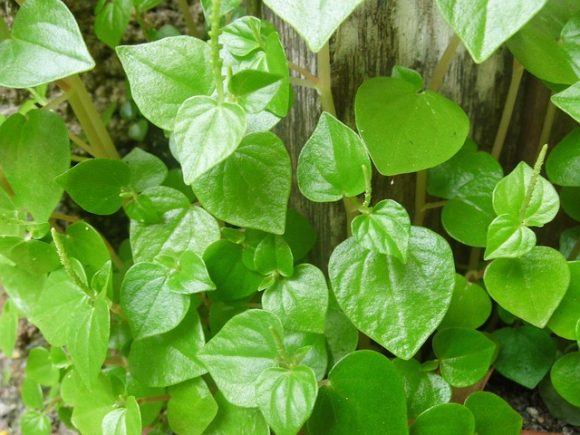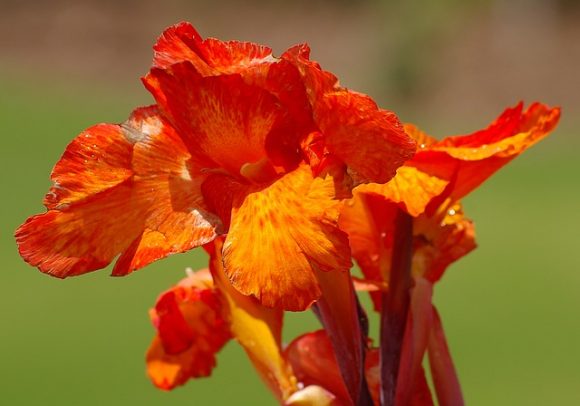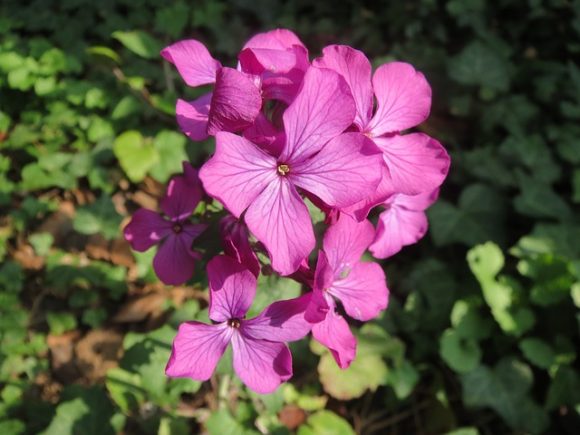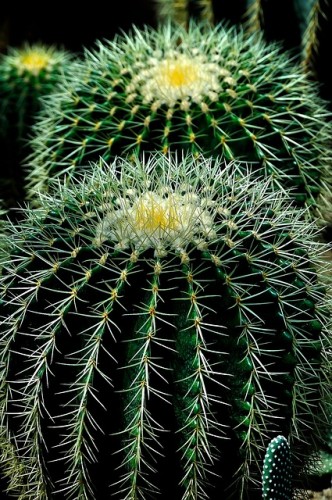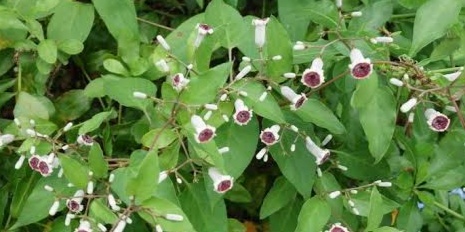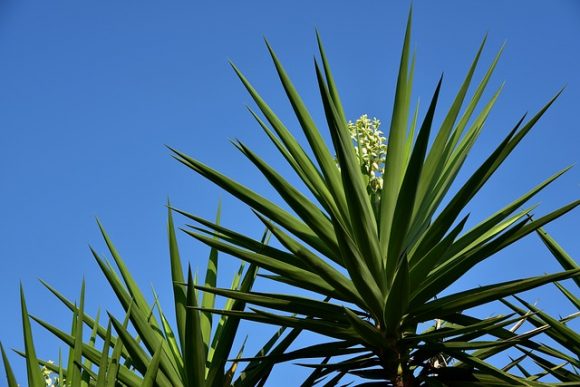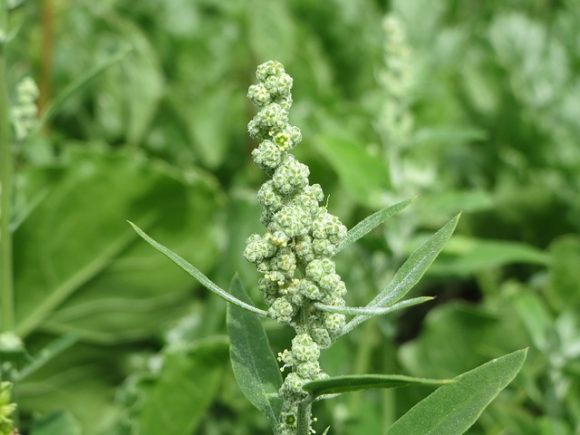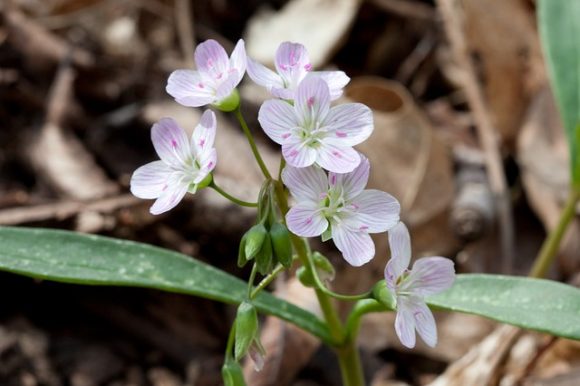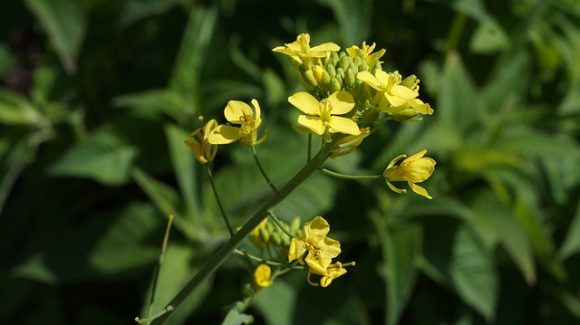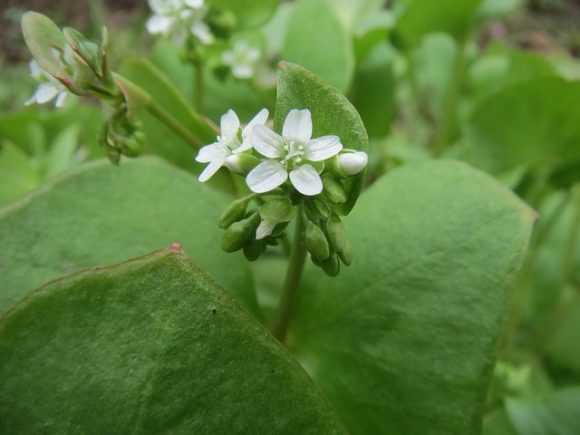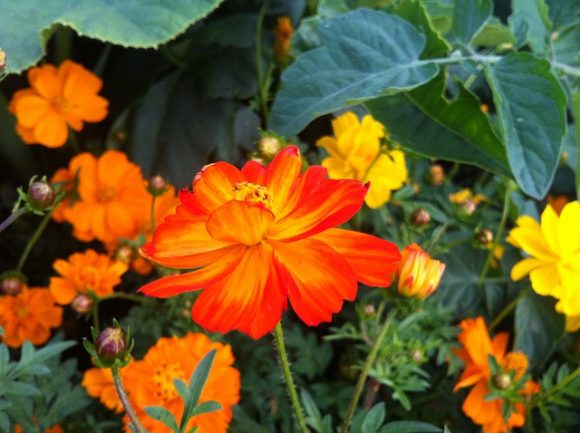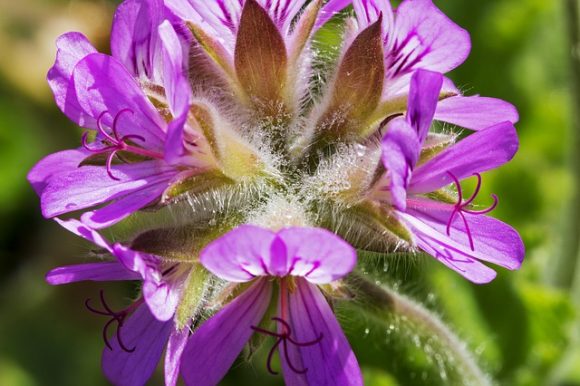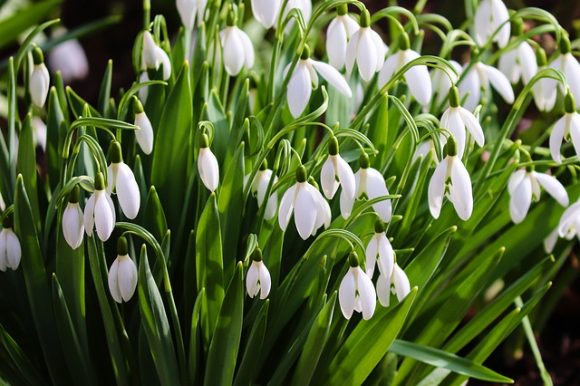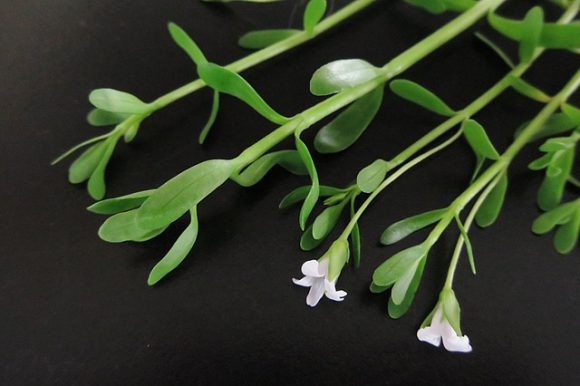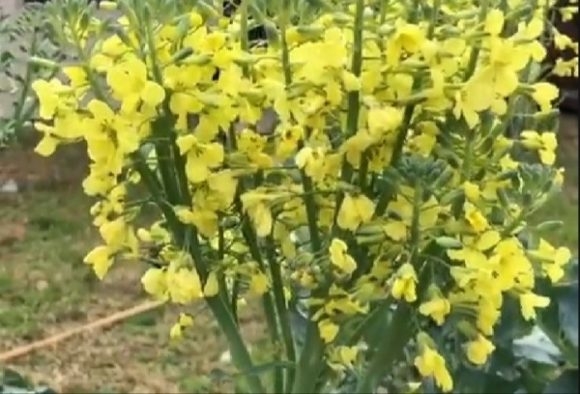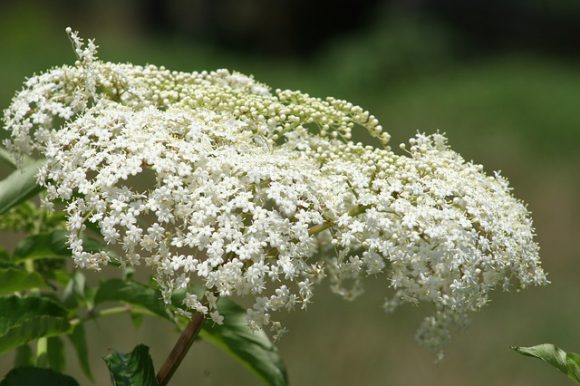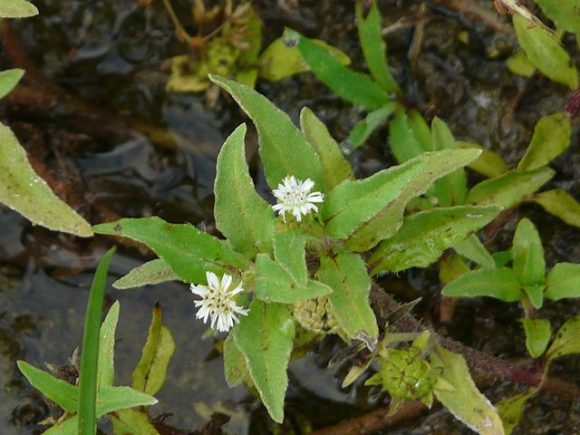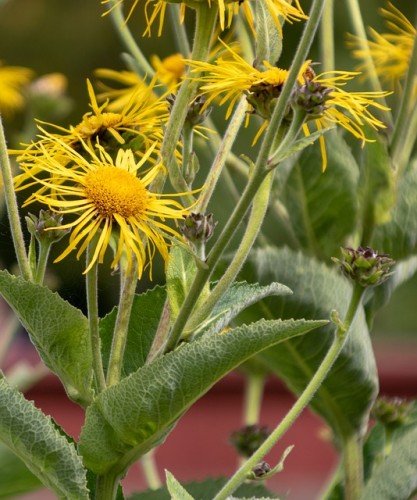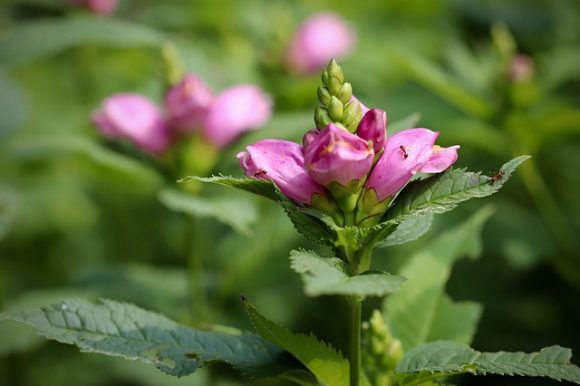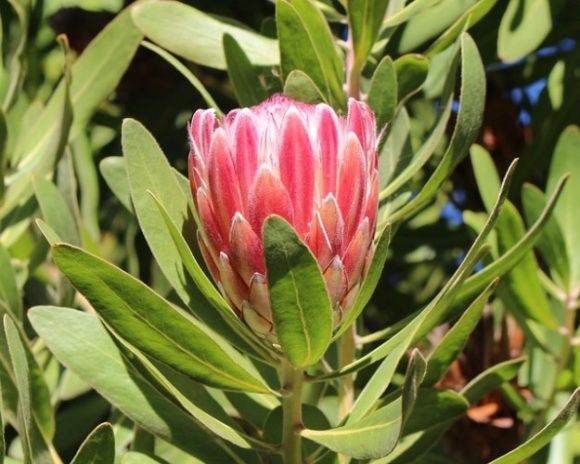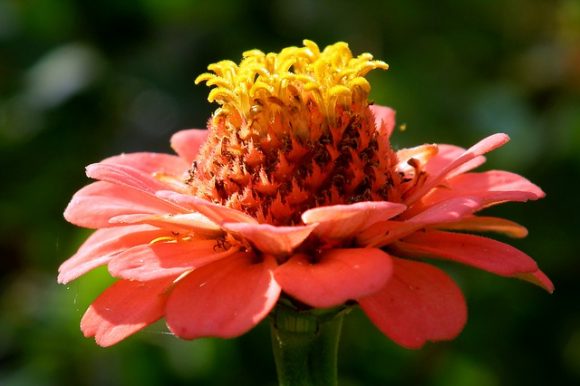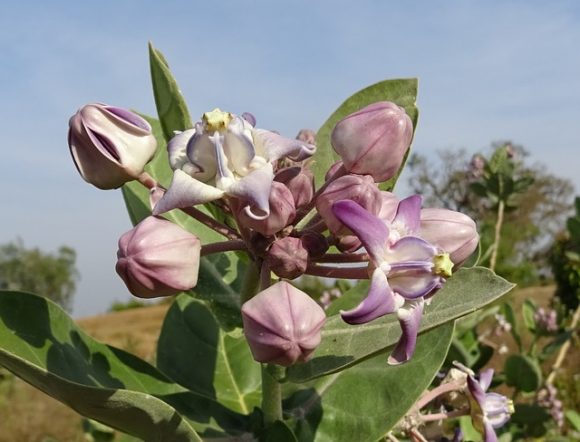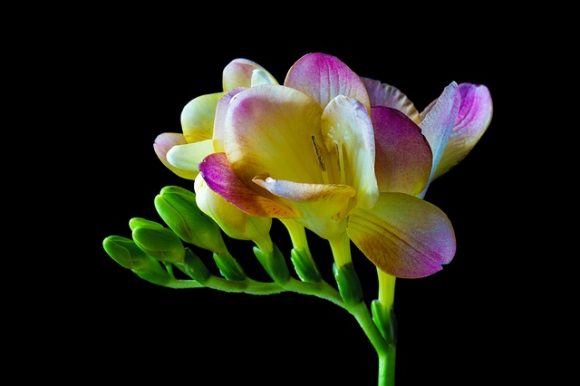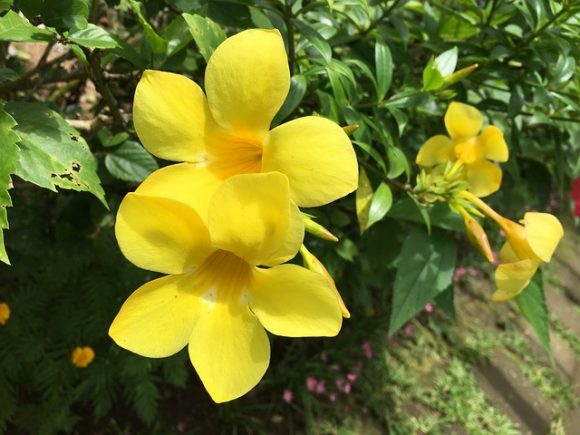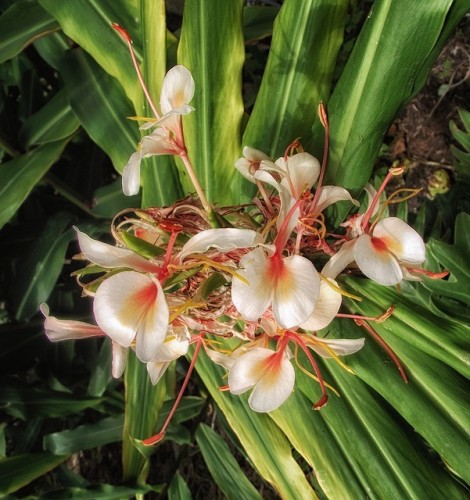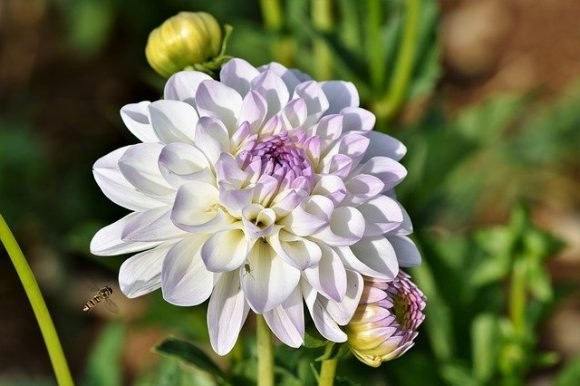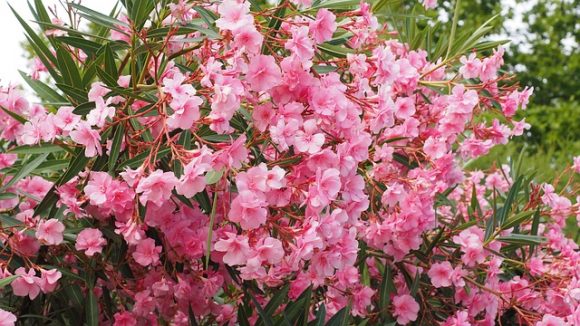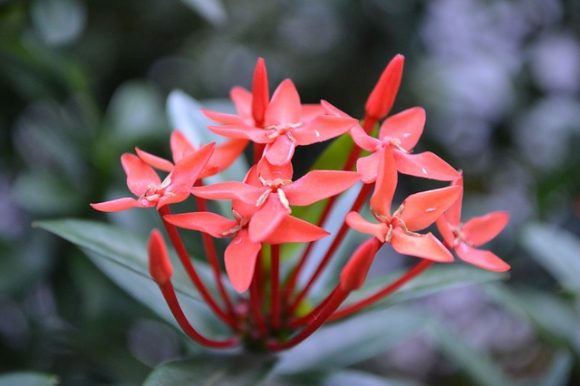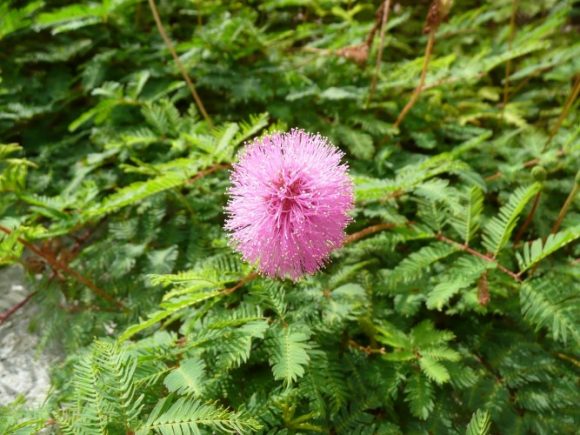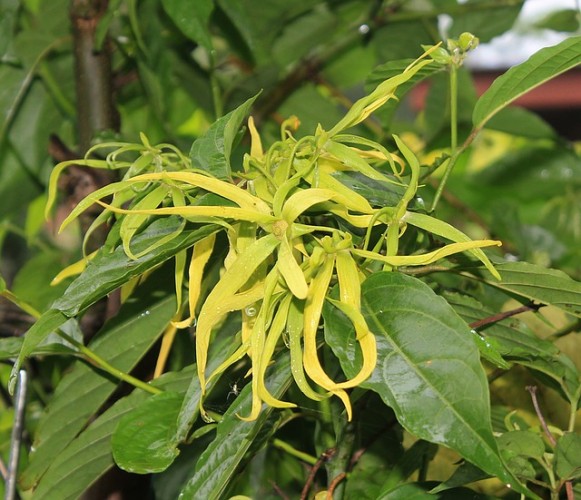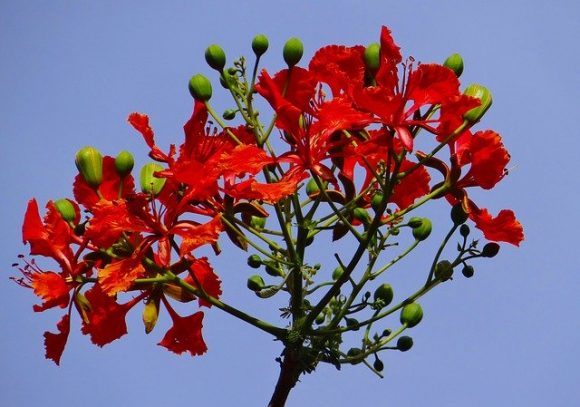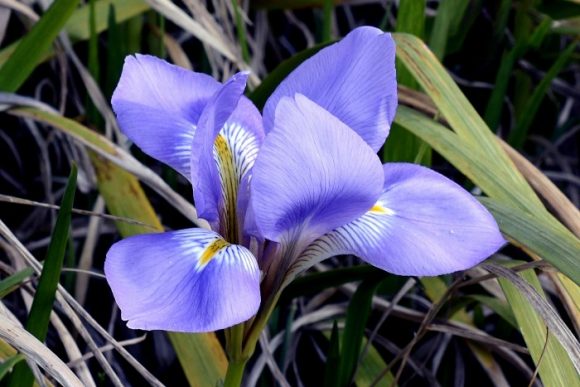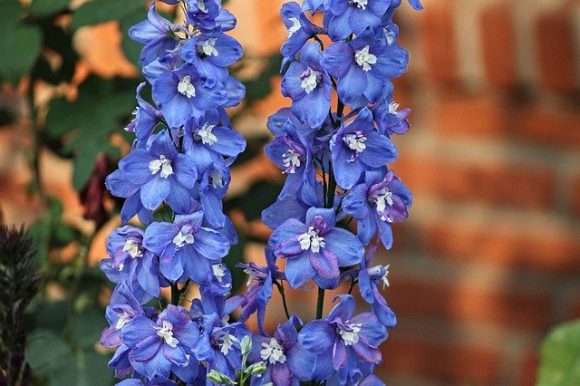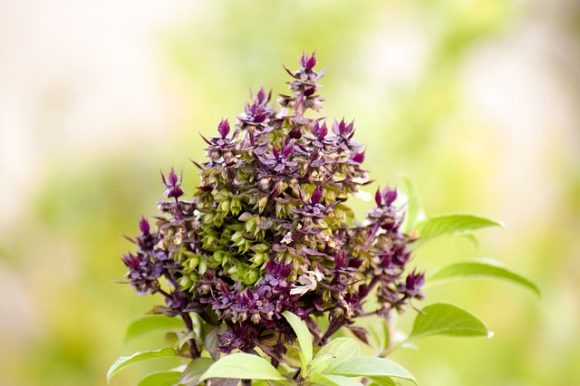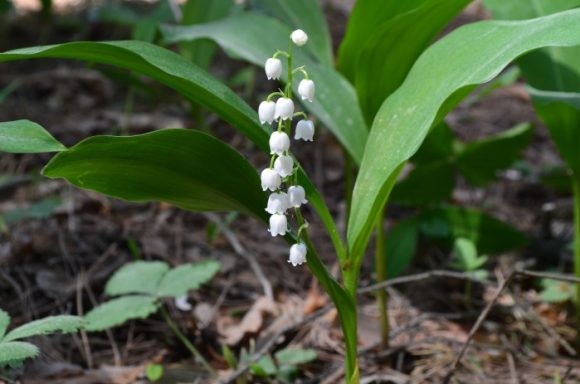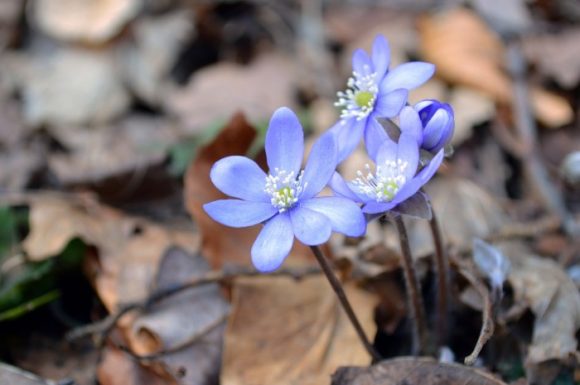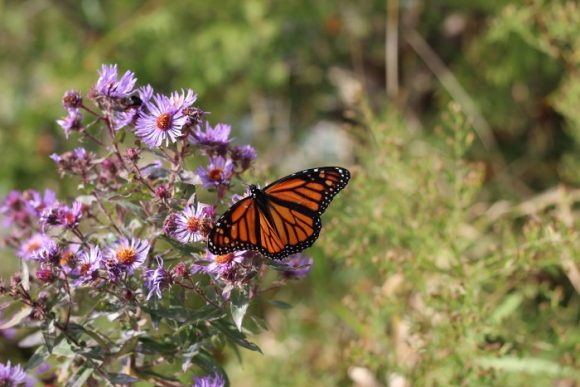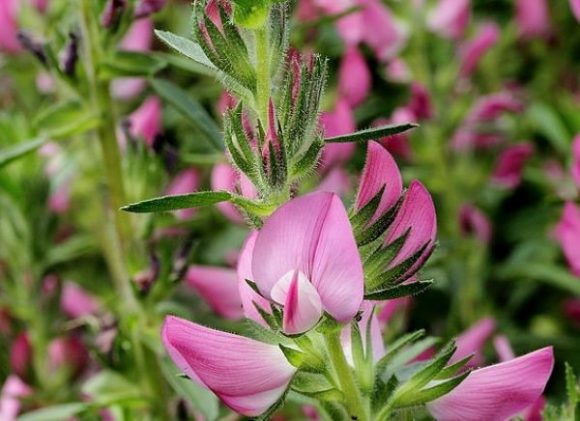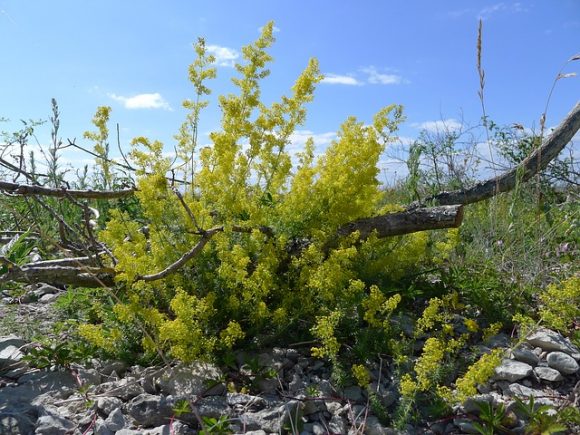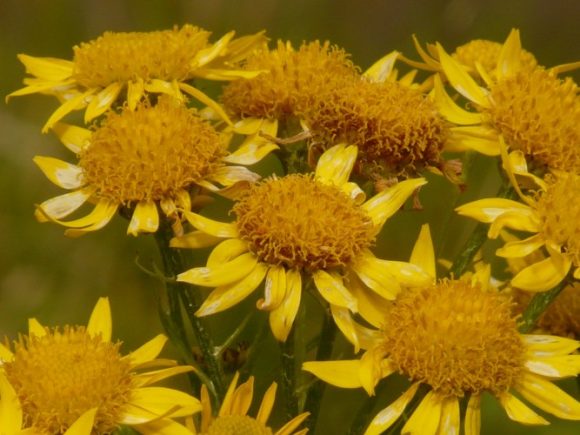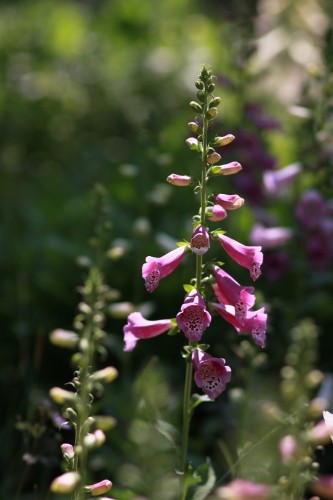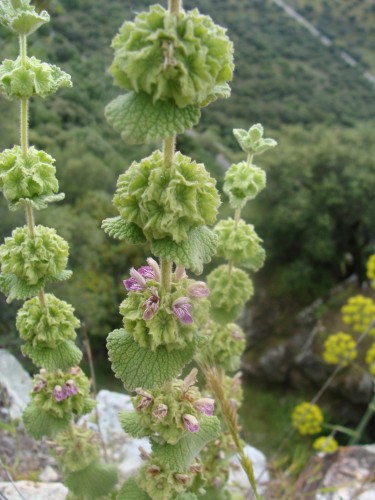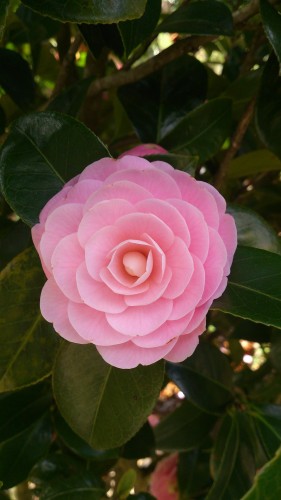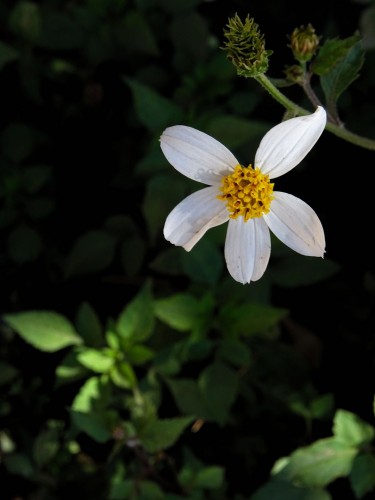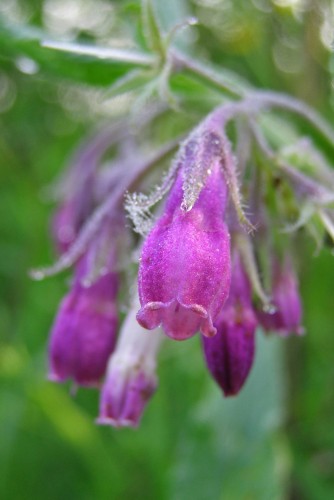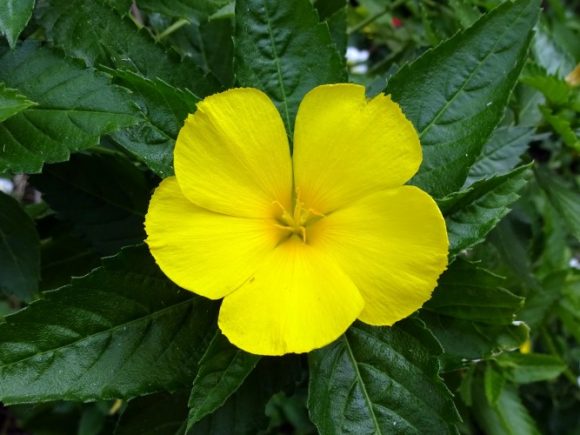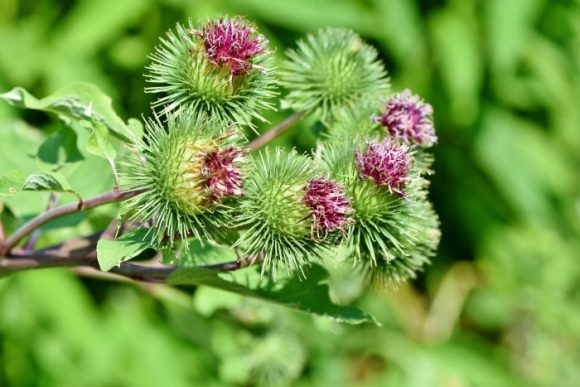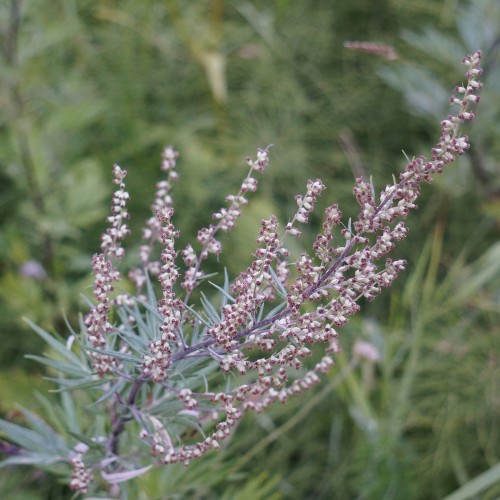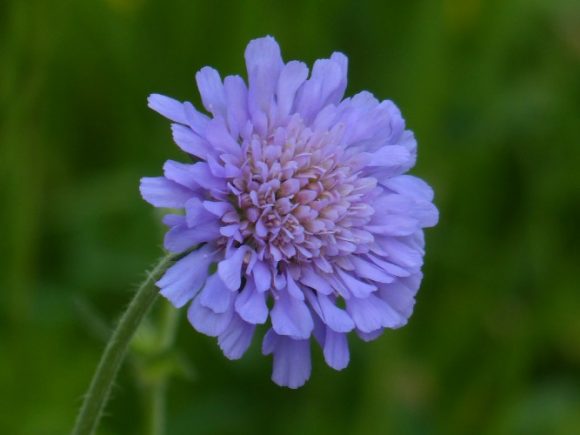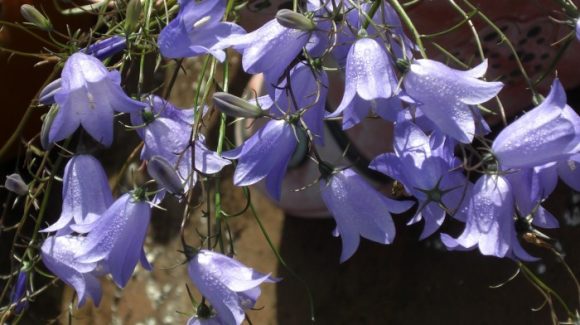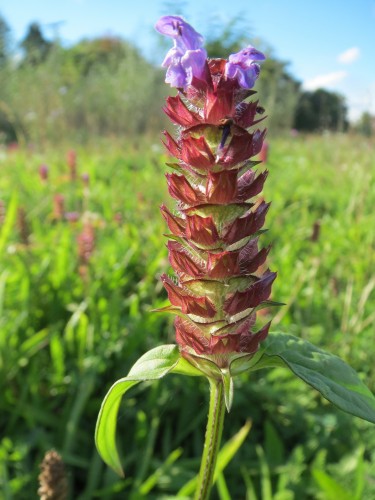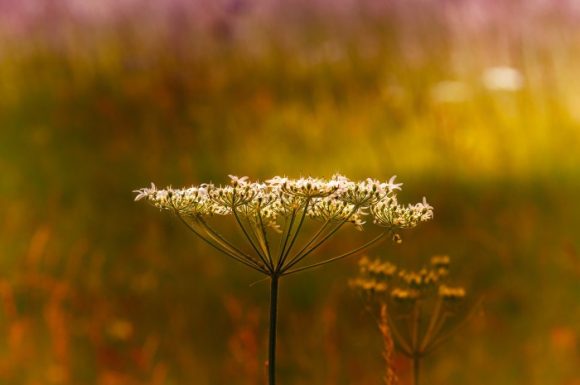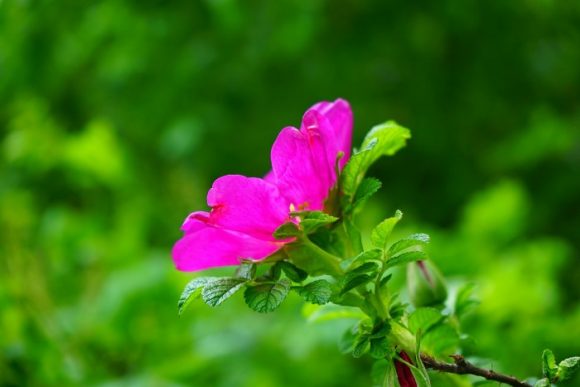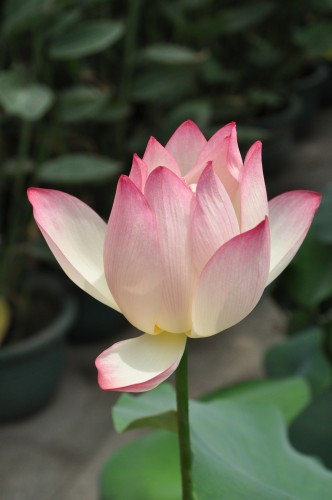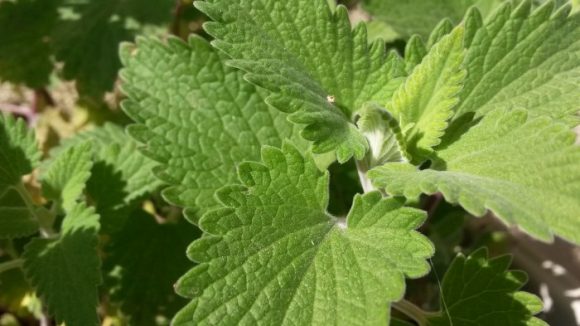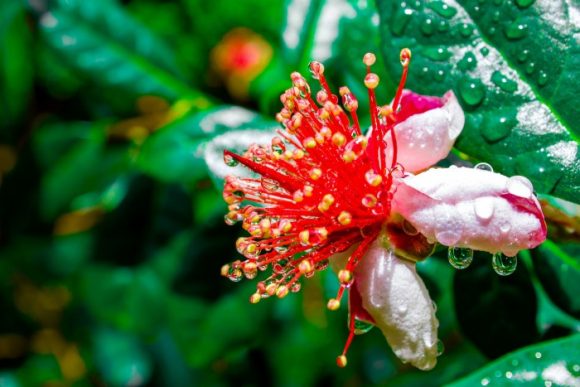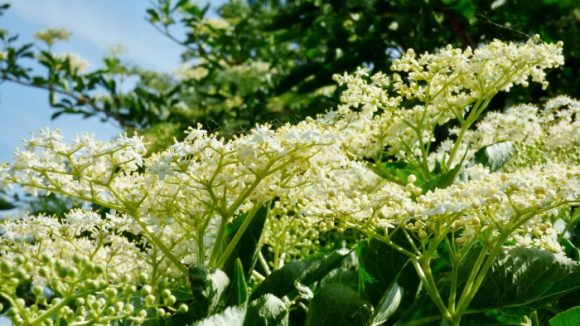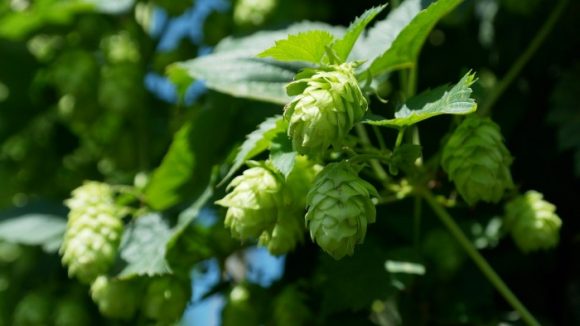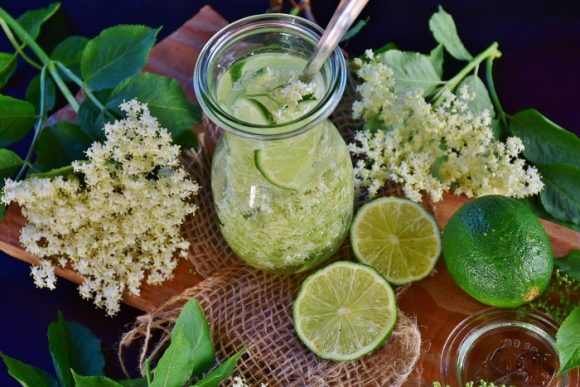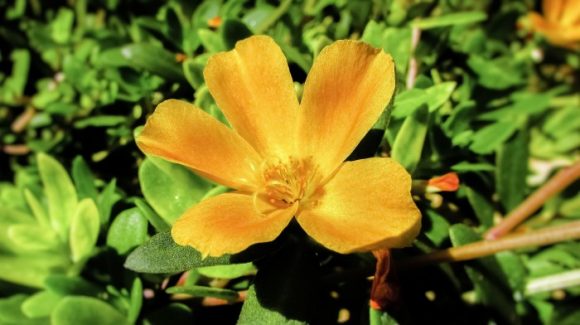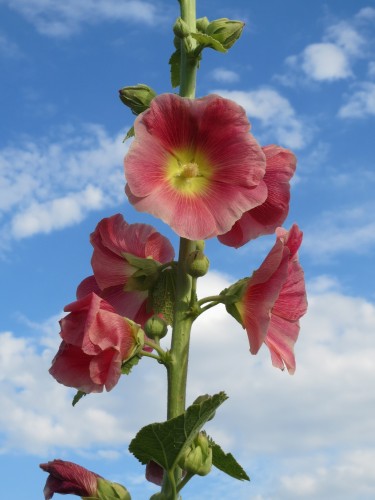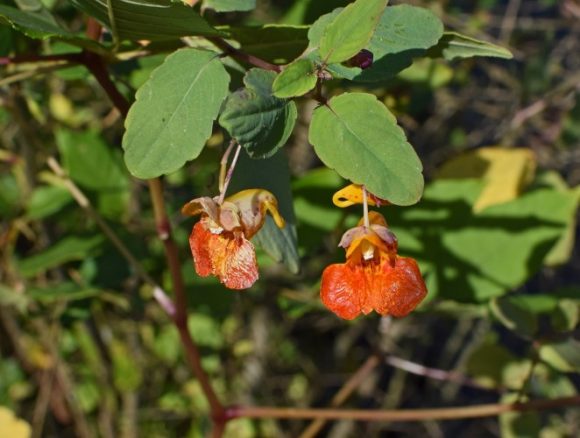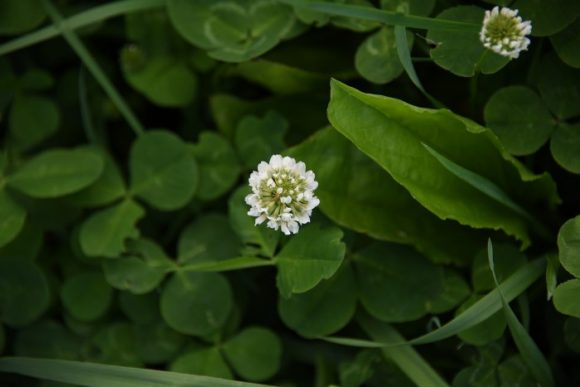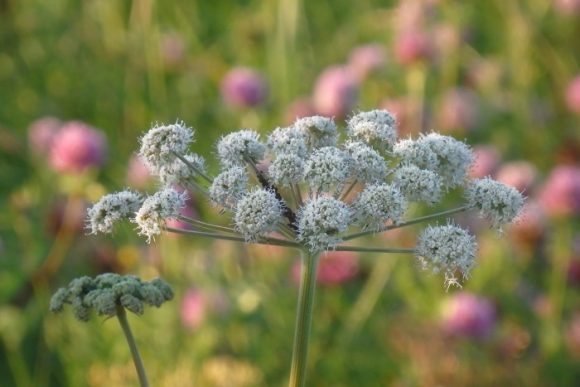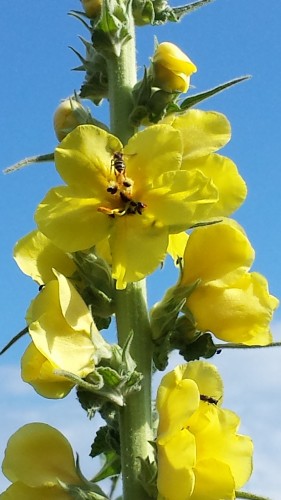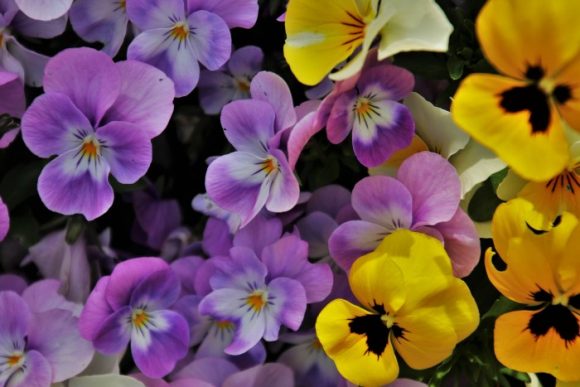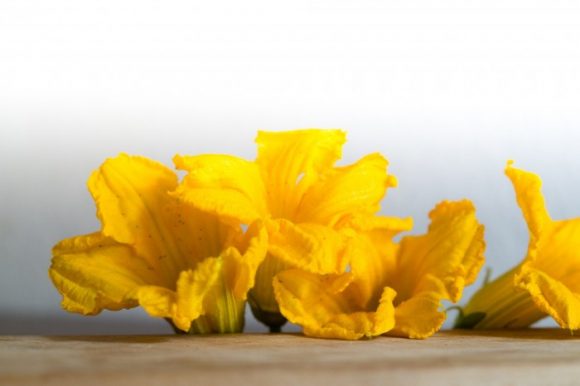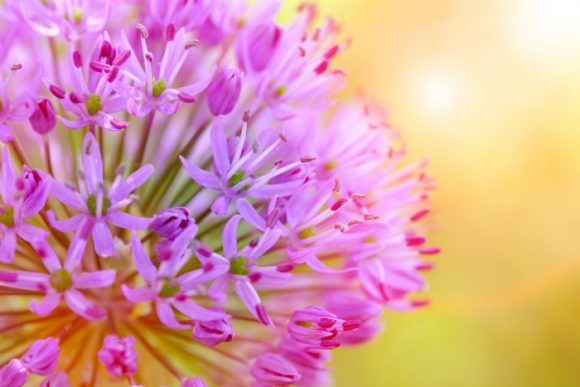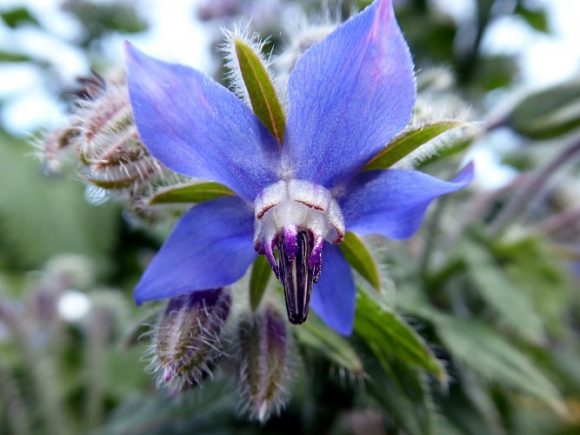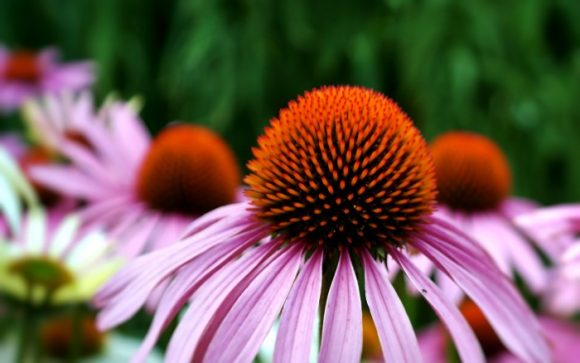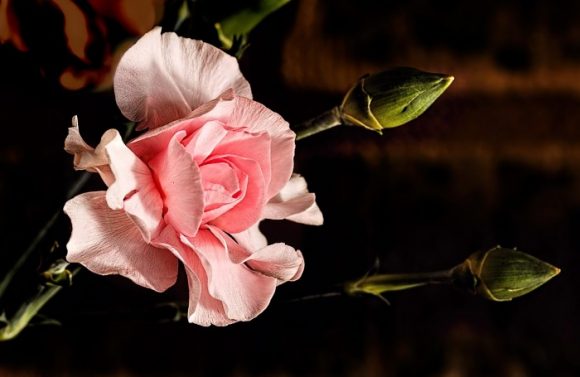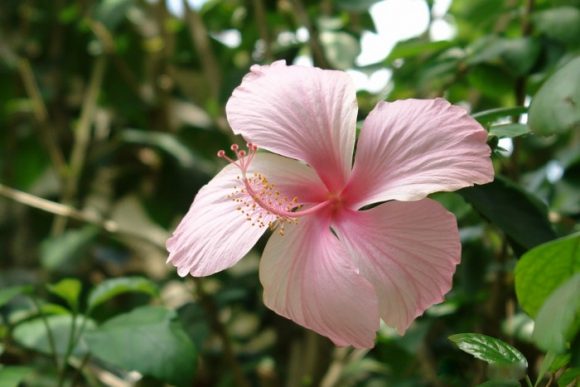All posts by Florist Ephy
The Miraculous Shiny Bush Plant
Peperomia pellucida, commonly known as the shiny bush, greenhouse, and tea plant, is an annual flowering plant in the piperaceae family. Continue reading [...]
Colorful, Edible and Medicinal Celosia
Celosia, commonly known as woolflowers, quail grass, and Lagos spinach, is a small genus of flowering plants in the amaranth family. Continue reading [...]
Radish, a Nutritional Power House
Raphanus sativus, commonly known as radish or humble mooli, is a biennial or annual flowering plant in the brassicaceae family. Continue reading [...]
Grow Your Cannas and Eat Them Too
Canna plant, also known as canna lily (it is not a true lily) is a perennial, rhizomatous, flowering tropical herb. Continue reading [...]
Its Time For Honesty
Lunaria annua, also known as common honesty, garden honesty, moonwort, or silver dollar plant, is a biennial plant in the brassica family. Continue reading [...]
Hoodia Gordonii For Hunger and Thirst Suppression
Hoodia gordonii, commonly known as bushman's hat, hoodia cacti, or just hoodia, is a spiny, succulent, cactus-like plant native to the desert region of Southern Africa. It occurs naturally in Namibia, Botswana, and South Africa, but has spread to other regions of the world, including North America, due to their beneficial purposes. Continue reading [...]
The Lily of the Nile: A Beautiful African Aphrodisiac
Agapanthus africanus, commonly known as lily of the Nile, African blue lily, agapanthus, and the flower of love, is a perennial flowering plant belonging to the agapanthus genus and amaryllidaceae family. Lilies of the Nile are native to the southern part of Africa but have spread to other regions of the world as ornamental plants due to their beautiful blue flowers. Continue reading [...]
Want To Attract Money and Friendship? Get The Jade Plant
Crassula ovata, commonly known as jade plant, pink joy, jade, happy jade plant, jade tree plant, happiness plant money plant, and lucky plant, is an evergreen plant native to the southern region of Africa. The plant has spread and gained popularity in most parts of the world due to its beauty and versatility making it a perfect houseplant. Continue reading [...]
The Anticancer, Antibacterial and Antiviral Potential of The Currant Bush
Currant bush, also known as prickly fan flower, maroon bush, and botanically referred to as scaevola spinescens, is a flowering plant belonging to the goodeniaceae family. It is native to Australia where it has been used as aboriginal medicine for ages. Continue reading [...]
Skunk Vine: A Beneficial Plant With A Stinky Name
Paederia Foetida, commonly known as skunk vine, stink vine, or Chinese fever vine, is a slender climbing vine that scrambles over other plants for support. It is native to Asia and thrives in temperate and tropical regions. The plant has oblong or ovate leaves that grow opposite each other. Blossoms are lilac or pink with five petals. Continue reading [...]
Cucumber Flowers: Fry or Use Them for Garnishing
Cucumis sativus, commonly known as the cucumber plant, is an annual flowering plant belonging to the cucurbitaceae family in the cucumis genus. The genus consists of more than 40 species including the popular watermelon and cantaloupe. Cucumber is also known as kiukaba, cetriolo, and pepino. Continue reading [...]
Yucca Blossoms: Yes, You Can Eat The Dashing Flowers
Yucca filamentosa , commonly known as yucca, is a flowering evergreen shrub in the asparagaceae family. It is native to the dry, hot regions of West Indies and the Americas.
The plant is highly adaptable which has helped it spread to other regions of the world.
Yucca is easy to identify due to its unique rosette of lance-shaped, succulent leaves, and large off-white or white blooms. Continue reading [...]
Sesame: An Edible Plant With Herbal Uses
Sesame, benne, or sesame indicum, is a strong-scented, flowering plant
commonly cultivated as a food crop. It has dark-green leaves with
serrated edges. Benne produces white rose, or light purple,
bell-shaped blossoms with pink streaks or spots. The flowers give way
to small, sausage-like pods enclosing pear-shaped seeds. Though not
very common due to its high-value oil, sesame is sometimes grown as an
ornamental plant due to its beautiful blossoms. Continue reading [...]
Beautiful, Spicy and Remedial: Meet The Saffron Crocus Flower
Saffron crocus, or saffron, and botanically known as crocus sativus, is a perennial flowering plant of the crocus genus in the iris family. Its English name, saffron, is derived from a French word, safran. The word was borrowed from the Latin word safranum, which is thought to have originated from an Arabic word that means yellow. Continue reading [...]
Cowslip: The Underused Herbal and Edible Flowering Plant
European cowslip, common cowslip, cowslip, and botanically known as primula veris, is a flowering perennial native to the Northern Hemisphere. It thrives in hedgerows, meadows, and slopes. Continue reading [...]
Mexican Tea for Upset Stomach
Dysphania ambrosioides, commonly known as Mexican tea, wormseed, Jesuit tea, and epazote, is an annual flowering plant that naturally occurs in the tropics and subtropics. Epazote features long and slender dark green leaves with jagged edges. It produces tiny green flowers that give way to thousands of small seeds. Continue reading [...]
Virginia Spring Beauty: For Food, Medicine and Weather Purposes
Claytonia virginica, commonly known as Virginia spring beauty, fairy spud, eastern spring beauty, grass-flower, or just spring beauty, is a low-growing, pretty, perennial wildflower, and delicious vegetable. It is native to North America and thrives in sunny river banks, well-watered woodlands, and thickets. Continue reading [...]
Sacha Inchi, The Climbing Superfood
Sacha inchi, Inca nut or Inca peanut, and botanically known as plukenetia volubilis, is a woody, perennial climbing plant in the euphorbiaceae family. Though sacha inchi is known as Inca nut, it's not a nut per se but a seed. Continue reading [...]
Bearberry: Food For Bears and Humans Too
Arctostaphylos uva-ursi, commonly known as bearberry or pinemat manzanita, is a low-growing, evergreen plant of the heath family. It is native to Europe, Asia, and North America. The plant’s glossy and leathery green leaves normally take on a purple or red tinge in winter before turning to green again in spring. Continue reading [...]
Common Boneset: A Popular Herbal Plant With a Magical Past
Common boneset, also known as sweating plant, agueweed, wood boneset, boneset, or wild Isaac, and botanically known as eupatorium perfoliatum, is a flowering plant in the aster family. The plant should not be confused with comfrey which is commonly known as bone knit or in some instances, boneset. Common boneset is native to North America and Canada but was introduced to other regions of the world as a result of colonialization. Continue reading [...]
Tatsoi Flowers: Crunchy Delicacies
Brassica rapa, commonly referred to as tatsoi, spoon mustard, tah tsai, and spinach mustard, is a biennial, low-growing plant. It is native to Asia and considered an ancient vegetable but has been introduced to many parts of the world including North America. Continue reading [...]
Alfalfa, The Superfood Used as Fodder
Alfalfa, or lucerne, and botanically known as medicago sativa, is a perennial flowering plant belonging to the fabaceae family. It originated from Central and South Asia but it escaped cultivation and is now grown in most regions of the world as a high-value fodder crop. Continue reading [...]
Blue Dicks: The Edible Flowers With a Giggly Name
Dichelostemma capitatum, commonly known as blue dicks, or wild hyacinth, is a perennial wildflower with a funny-sounding name. Continue reading [...]
Miner’s Lettuce: Miner’s Staple and America’s Gift to Salad
Claytonia perfoliata, commonly known as miner’s lettuce or Indian lettuce, is a small, herbaceous, mildly succulent annual plant in the montiaceae family. Continue reading [...]
Sulfur Cosmos: The Bright, Modest Multi Purpose Flower
Sulfur cosmos, orange sulfur, yellow cosmos, or bright lights, and botanically known as cosmos sulphureus, is an annual flowering plant in the aster or sunflower family. It is native to the Americas and Mexico but has now naturalized in Australia, Europe, Africa, and Asia. In most of these places, it was introduced as an ornamental plant but in some instances, its seeds were accidentally transported aboard merchant ships. Continue reading [...]
Common Cattail: Swamp’s Grocery Store
Typha latifolia, also known as common cattail, corn dog grass, bulrush, broadleaf cattail, or just cattail, is a perennial plant in the cattail family. It is native to North and South America, Australia, Europe, and Africa. The grass-like plant commonly occurs in marshland, ponds, swamps, wet thickets, and bogs. It thrives in moist soil on the edge of riparian areas in places with plenty of sunshine. Continue reading [...]
Cardinal flower: Once Used as a Love Charm Now a Herbal Plant
Cardinal flower, botanically known as lobelia cardinalis, is a herbaceous, flowering, perennial plant in the bellflower family (campanulaceae). The plant is native to the Americas but was spread to other regions including Europe, by settlers who sent the plant to their home countries due to its attractive flowers.
Continue reading [...]
Lemon Myrtle, the Super Herb
Backhousia citriodora, commonly known as lemon myrtle, or sweet verbena, is a subtropical flowering shrub native to Australia but is now grown around the world. Continue reading [...]
Rose-scented Geranium Flower : Ideal for Aromatherapy
Rose-scented geranium, botanically known as geranium pelargonium, is an evergreen perennial plant. It is native to the southern part of Africa but has spread to other regions of the world due to its fame as a medicinal and ornamental plant. Continue reading [...]
Snowdrop Flower: Beyond White Innocence
Snowdrop, also referred to as common snowdrop, and botanically known as galanthus nivalis, is a perennial low-growing flowering plant belonging to the amaryllis family. It is native to Asia and Europe. Continue reading [...]
Gotu Kola, The Herb of Longevity
Gotu kola, Asian pennywort or Indian pennywort, and botanically known as centella asiatica, is a herbaceous, perennial plant in the apiaceae family. It is native to Africa, Asia, and Australia. Continue reading [...]
Flinders Rose (Caper) : The Mediterranean Floral Cuisine
Flinders rose or caper is a small, edible flower bud growing on the bush of capparis spinosa or caper bush. The shrub is native to Asia and the Mediterranean region. Caper bush belongs to the caper family which is closely related to the mustard family. If the unopened capers are not picked in time, they open up resulting in beautiful, pink-white flowers. Continue reading [...]
Motherwort for Anxiety and Cardiovascular Problems
Motherwort, also known as lion’s tail, throw-wort or lion’s ear and botanically known as leonurus cardiaca, is an upright shrub with dark green leaves belonging to the mint family. It is native to Europe and Asia but is now common in other regions including the US where it is considered an invasive weed in some states. Continue reading [...]
Time to Eat Broccoli Flower
Broccoli is a flowering plant belonging to the cabbage family. The plant is related to kale, cabbage, cauliflower, and Brussels sprouts. Continue reading [...]
Safflower Tea is Good for Your Bone and Heart Health
Safflower tea is derived from safflower, an annual flowering plant in the aster or sunflower family. The plant is botanically known as carthamus tinctoris and is native to Africa and Asia. Continue reading [...]
Cauliflower: Good for Your Brain and Heart
Cauliflower is an annual plant belonging to the cabbage family and is a close relative of kale, broccoli, Brussels sprouts, and cabbage. It originated from Asia and spread to other regions of the world as more people discovered its edibility. Ancient records show that cauliflower has been cultivated for almost a thousand years especially in the Turkey region. The vegetable became popular in Europe in the 16th century and caught on four decades later in the US. Today, China and the US are leading producers of cauliflower. Continue reading [...]
Delicious, Colorful Wisteria
Wisteria is a genus of deciduous, rapidly growing climbers in the pea family. The plants are native to North America and Asia but are now cultivated in other parts of the world due to the colorful display of their flowers. In some instances, wisterias have escaped from gardens to become wildflowers which some regions consider noxious weeds. Continue reading [...]
Baby’s Breath Flower: Leukemia Buster?
Baby’s breath, botanically known as gypsophila paniculata, is a genus of perennial flowering herbs in the carnation family. The plant is native to Australia, Eurasia, Pacific Islands, and Africa. Continue reading [...]
False Daisy for Skincare
Eclipta prostrate or eclipta alba, commonly known as false daisy or yerba de tago, is an annual, flowering plant belonging to the aster or sunflower family. The plant is known as a false daisy because its flowers resemble daisy blossoms. Continue reading [...]
Marsh Marigold: Beyond Floral Beauty
Marsh marigold, also known as King's cup, bull's eyes, water blobs, verrucaria, and meadow routs, and botanically referred to as caltha palustris, is a showy, perennial, flowering plant belonging to the buttercup family. Continue reading [...]
Horseheal for Lung Health
Horseheal, also known as wild sunflower, scabwort, and botanically referred to as elecampagne, or inula helenium, is a flowering plant belonging to the sunflower family Continue reading [...]
Want a Happy Uterus? Try Lady’s Mantle
Lady's mantle, also known as dew cup, nine hooks, our lady's mantle and botanically known as alchemilla vulgaris, is a flowering plant belonging to the rose family. It is easily found along pathways, roadsides, and grasslands. Continue reading [...]
Eyebright for Eye Problems
Eyebright or eyewort, botanically known as euphrasia officials, is a wildflower in the orobanchaceae family. It is native to Europe, North America, and Asia. Continue reading [...]
White Turtlehead: An Old Herb With Tonic Effects
White turtlehead, also known as fishmouth, snakehead, shell flower, turtle bloom, and rheumatism wort, is a perennial, flowering herb belonging to the plantain family. The herb, botanically known as chelone glabra, was once categorized under the snapdragon family before botanists moved it to the plantain family. Continue reading [...]
Common Sugarbush, The Honey Flower
Protea repens, also known as the common sugarbush, true sugarbush or sugarbush, is an evergreen flowering shrub belonging to the protea genus. It is native to South Africa and highly popular around the world. In the US, the shrub mostly grows in plant hardiness zones 8 to 11. Continue reading [...]
Lobelia for Asthma and Addictions?
Lobelia inflata, commonly known as lobelia, gagroot, asthma weed, pukeweed and wild tobacco, is a flowering perennial herb native to Canada and the eastern region of the US. Lobelia flowers throughout summer and continues to bloom until first frost knocks. It is easy to grow and requires minimal care. The plant produces abundant flowers colored blue, violet, red, and pink. In full bloom, lobelia brings life, beauty, and vibrancy to a garden. Continue reading [...]
Zinnia Flower: The Sacred Plant For Life And Wisdom
Zinnia is a low, coarse, upright perennial flowering plant native to South and North America. The plant occurs in dry fertile grasslands in full sun and rarely thrives in wet conditions. Zinnia flowers thrive in hot weather and bloom throughout summer. The flowers come in various colors including red, yellow, orange, pink, white and lavender. Continue reading [...]
Crown Flower: Good For Diabetics?
Calotropis gigantea, commonly known as crown flower, or giant milkweed, is a shrub belonging to the milkweed family. The plant occurs in tropical and subtropical regions and rarely grows in cold areas. Continue reading [...]
Glorious, Lethal And Beneficial: Meet The Controversial Flame Lily
Glorious superba, commonly known as flame lily, glory lily, or climbing lily, is a climbing perennial in the colchicaceae family. The plant is known as climbing lily because it normally scrambles over other plants. The climbing lily uses tendrils to attach itself to other plants or objects for support as it. Continue reading [...]
Cock’s Comb: The Funky, Woolly Vegetable
Cock's comb, also known as rooster's comb, cockscomb, brain celosia, wool flower, and botanically known as celosia, is a flowering herb belonging to the amaranth family. Continue reading [...]
Butterfly Pea Flower: The Famous Blue Tea Flower Of Youth And Vigor
Butterfly pea flowers are blossoms of the butterfly pea plant, also referred to as blue butterfly pea, Asian pigeonwings, and blue pea, and botanically known as clitoria ternatea. The plant's genus name, clitoria, is derived from a Greek word, kreitoris, which refers to the shape of the flower resembling the female genitalia. Continue reading [...]
Gardenia Flowers: Sweet And Sensual
Gardenia, or cape jasmine, and botanically known as gardenia jasminoides, is a flowering shrub belonging to the rubiaceae family. It is closely related to cinnamon and your aromatic, bitter-sweet morning brew: coffee. It is native to Asia especially China, Japan, Vietnam, Myanmar, and India. Today, the plant has spread to other regions including Europe and the US. Continue reading [...]
Freesia Flowers: Subtle, Intense And Seductive
Freesia is a herbaceous flowering plant belonging to the iridacea family. The plant usually grows from perennial bulbs which remain dormant under the ground when the aerial parts die off during winter. Freesia is named after Friedrich Freese, a German doctor, and botanist. Continue reading [...]
Is Yellow Bell An Anticancer?
Tecoma stans, commonly known as yellow bell, esperanza, yellow elder, trumpet bush, yellow trumpet bush, and trumpet flower, is a perennial flowering shrub belonging to the bignoniaceae family. Continue reading [...]
Butterfly Ginger: A Fragrant Flower Deserving A Place In Your Garden
Hedychium coronarium, commonly known as butterfly ginger, butterfly ginger lily, ginger lily, or garland lily, is a perennial, herbaceous member of the zingiberaceae or ginger family. It has green, smooth leaves resembling daggers that grow on opposite sides of each other on the stem. Continue reading [...]
Dahlia, The Edible And Medicinal National Flower Of Mexico
Dahlia is a genus of perennial, herbaceous, flowering plants native to Mexico. The plant is a member of the asteraceae family alongside zinnia, daisy, and sunflower. Dahlia is the national flower of Mexico and one of the popular flowers among competitive flower growers in the world. Continue reading [...]
Oleander: Beautiful, Deadly But Good For Heart Conditions Under Medical Supervision
Nerium oleander, also known as pink oleander, Jericho rose, oleander, kaner, rosa francesa, rosebay, and rose laurel, is a flowering shrub in the dogbane family. It is native to Asia but has spread to other regions including Africa and North America due to its showy flowers. In the US, oleander occurs in USDA hardiness zones 8-11. Continue reading [...]
Santan Flowers: Good For Your Health And Palates
Santan, also known as jungle flame, and botanically referred to as ixora coccinea, is a dense, flowering shrub in the rubiaceae family. It is native to Sri Lanka and India but is now a popular ornamental and hedge shrub in most tropical and subtropical regions of the world. In the US, it thrives in USDA zones 9 and above Continue reading [...]
Turmeric Flowers: Superfood Or Myth?
Turmeric, also known as Indian saffron, and botanically known as curcuma longa, or curcuma aromatica, is a flowering plant in the zingiberaceae (ginger) family. It is thought to have originated from India before spreading to Africa, Asia and other regions of the world including North America. Continue reading [...]
Patchouli, Good For Your Skin And Mind
Patchouli, stinkweed or putcha-pat, botanically known as pogostemon cablin, is a flowering herb in the mint family. The plant is native to the Southeastern region of Asia but has spread to other parts of the world including North America, China, and Africa. Continue reading [...]
Sundew, A Beneficial Carnivorous Flower With A Sour Twist
Sundew, also known as red rot, dew plant, and botanically known as drosera rotundifolia, is a small, perennial flowering plant in the droseraceae family. The plant is native to Europe, America, and Asia but has spread to other regions except for Antarctica. Continue reading [...]
Shy, Sensitive But Potent: Meet The Bashful Touch Me Not
Mimosa pudica, commonly known as touch-me-not, sleepy plant, shame plant, shy plant, or zombie plant, is a perennial and in some instances annual flowering plant belonging to the legume or pea family. Continue reading [...]
Ylang-Ylang Flowers For Sensuality
Cananga odorata, also known as ylang-ylang, perfume tree, cadmia or cananga, is a plant that belongs to a genus of flowering trees in the annonacea family. Continue reading [...]
Frangipani Flower: Nature’s Fragrant Antibiotic?
Frangipani, also known as common frangipani, nosegay, temple flower, and botanically referred to as plumeria rubra, is a small deciduous shrub native to Central America, Mexico, and Venezuela. With time the plant spread to other regions and is now a common sight in most countries around the world. Continue reading [...]
Aloe Vera: Nature’s Wonder Plant
Aloe vera, also known as aloe, is an upright flowering plant with thick, succulent leaves. The plant is native to the Mediterranean region but has spread to almost every region of the world due to its fame in the herbal industry. Continue reading [...]
Ginger Flowers For Arthritis
Ginger flower, commonly known as torch ginger flower, torch lily, red ginger or wild ginger, and botanically known as etlingera elatior, is a flowering plant native to Asia, and specifically Malaysia. Continue reading [...]
Virtue Has A Name: Horseweed
Horseweed, botanically known as conyza canadensis, or erigeron canadensis and commonly known as fleabane, prideweed, and colt’s tail, is an annual flowering plant with stiff, leafy, and branched stems. The plant has grooved, hairy stems with alternate or serrated leaves. Continue reading [...]
Flamboyant, Fiery And Medicinal Flame Tree (Gulmohar)
Gulmohar, also known as flame tree is a beautiful, deciduous, flowering tree belonging to the leguminosae family. The tree is also known as peacock flower tree, royal poinciana and botanically referred to as delonix regia. Continue reading [...]
Iris Flowers For Aromatherapy
Iris is a genus of showy, perennial flowering herbs in the iridaceae family. These plants occur in temperate regions of the world and are native to the Middle East, Asia, North America, Europe, and Africa. Continue reading [...]
Delphinium: The Beautiful Anti-parasitic Flower
Delphinium, also known as black knight, or larkspur, is a herbaceous, low-growing, perennial flowering plant belonging to the ranunculaceae family with over 300 species. Continue reading [...]
Camphor Tree: The Perfect Analgesic?
Cinnamomum Camphor, commonly known as camphor tree, is a broad-leaved, deciduous tree. The tree has a wide canopy and a thick trunk. Continue reading [...]
Holy Basil Flowers: Good For Your Body And Mind
Holy basil, botanically known as ocimum tenuiflorum and fondly referred to as tulasi, or tulsi, is a green, perennial, flowering herb belonging to the mint family. The mint family is popular for its culinary and medicinal qualities with plants such as mint, sage, oregano and lavender topping the list. Continue reading [...]
Plains Coreopsis Flower Tea For Regulating Insulin
Coreopsis tinctoria, commonly known as goldenwave, calliopsis, golden tickseed, or plains coreopsis, is a flowering annual in the aster family. It is native to North America but escaped from gardens, and spread to the rest of the world. Continue reading [...]
Reliable And Versatile: Sedum Health Benefits
Sedum, commonly known as common stonecrop, or just stonecrop, is an evergreen, perennial flowering plant belonging to the crussulaceae family in the sedum genus. Basically, there are about 300 species of sedum in the genus. The plant is native to the Northern Hemisphere but can be found growing in most regions of the world including Asia, Europe, and North Africa. Continue reading [...]
Hardy, Crisp And Yummy Hosta
Hostana Montana, commonly known as hosta, urui or ginbo is a perennial flowering plant in the lily family. Continue reading [...]
Spider Flower: Meet The African Cabbage
Cleome gynandra, commonly referred to as African cabbage, African spider flower, cat’s whiskers, bastard mustard, spider flower, or spider wisp, is an erect, annual, flowering plant belonging to the capparaceae family. The plant occurs throughout the tropical and subtropical regions of the world and is native to South Africa, Americas, and South East Asia. Continue reading [...]
Lily Of The Valley, The Fragrant, Natural Heart Tonic
The lily of the valley, botanically known as convallaria majalis, or lillium convallium, is a perennial, flowering plant native to North Asia, England and North America. It has creeping rhizomes that send up shoots. The shoots featuring a pair of leaves, uncoil as they lengthen and extend upwards. Continue reading [...]
Meet The Versatile Tulip Flower With Culinary And Medicinal Uses
Tulip, botanically known as tulipa, is a flowering perennial plant grown from a bulb in the liliaceae family. It flowers in spring and brings forth blossoms in a wide variety of colors, except blue. Tulip flowers have 3 petals and three sepals. Continue reading [...]
Wall Germander, An Ancient Gout Treatment
Teucrium chamaedrys, commonly known as wall germander, or germander, is an evergreen, perennial flowering plant native to the Mediterranean region of North Africa, Middle East, and Europe. This aromatic plant is a close relative of wood sage and a member of the mint family belonging to the teucrium genus. Germander was brought to North America by colonialists and spread to other regions of the world due to its medicinal properties. Continue reading [...]
Hepatica: A Beautiful Flower Deserving A Better Name
Anemone hepatica, commonly known as hepatica, kidney liverleaf, or liverwort is a flowering herb native to Europe, North America, and East Asia. It belongs to the crowfoot or butternut family and has long radical leaves. Hepatica prefers a moist, shady environment created by deciduous trees. It also occurs in grasslands, woodlands, and scrubs. Continue reading [...]
Creeping Woodsorrel: A Potential Treatment For Diabetes?
Oxalis corniculata, commonly known as creeping wood sorrel, sourgrass, or sleeping beauty, is a delicate, perennial, low-growing, flowering plant in the oxalis genus. It looks similar to the common yellow wood sorrel or oxalis stricta. Continue reading [...]
Hawthorn: A Heart-friendly Symbol Of Love
Hawthorn, also known as thornapple, mayflower, mayblossom, and botanically referred to as cratageus mongyna, is a thorny, flowering shrub in the rose family. It is native to the Nothern Hemisphere, especially Europe but is now naturalized in most regions of the world. It flowers in May and June, bringing forth white, delicate flowers with five petals and pink stamens. Continue reading [...]
Breathing Easy With New England Aster
New England aster, botanically known as symphyotrichum novae-angliae, is a stout, showy, flowering plant in the aster family. The plant is also known as michaelmas daisy while Native Americans referred to it as "it-brings-the-fall". New England aster is native to North America and adapts quite well to new environments. The plant occurs in waste areas or on the edge of fields. It is easy to cultivate, tolerates various types of soils and prefers growing in full sunlight.
Continue reading [...]
Begonias: Much More Than Beautiful Flowers
Begonia coccinea, or angel wing begonia, commonly known as begonia, is a fibrous, herbaceous, flowering, perennial plant with erect, branched stems. The plant starts flowering from summer and lasts until winter, bringing forth light pink or red flowers with a mild fragrance. The flowers are irregularly shaped blossoms with red peduncles. Begonias occur naturally in tropical and subtropical climates. These plants are quite popular due to their beautiful flowers with some species thriving indoors as ornamental plants. Begonia blossoms are likened to roses in beauty and luxury. They are rich in color, warm, and feminine. Continue reading [...]
Spiny Restharrow The Herbal Diuretic
Spiny restharrow or bugrane, stay plough, wild liquorice, and stinking tommy, botanically referred to as ononis spinosa, is a flowering shrub native to Europe. The plant occurs mostly on roadsides, forests and dry meadows. Continue reading [...]
Lady’s Bedstraw: Beddings And Medicine In One Package
Lady’s bedstraw, also known as yellow galium curdwort, galio, maid’s hair, and scientifically referred to as gallium verum, is a flowering, sprawling perennial plant. The plant is native to Asia and Europe but is now naturalized throughout most of the North American states. Continue reading [...]
Arnica For Arthritis Pain: Is It Effective?
Arnica Montana, commonly known as arnica, leopard’s bane, and wolf’s bane, is a perennial plant occurring naturally in North America and Europe. It produces yellow-orange blossoms similar to daisies and is fondly referred to as “mountain daisy”. Continue reading [...]
Grecian Foxglove, The Heart Friendly Wildflower
Grecian foxglove, botanically known as digitalis lanata, is a beautiful, short-lived perennial or biennial flowering plant. It is native to Europe and was brought to the US as an ornamental herb due to its beautiful blossoms that are ideal for the cut flower industry. Continue reading [...]
Wood Betony: Fascinating, Beautiful And Medicinal
Stachys officinalis, wood betony or hedge nettle, is a perennial, flowering grassland herb native to Western Asia, Europe, and North Africa. The plant commonly occurs in meadows and grasslands. Continue reading [...]
Not Just For Monarchs: Yes, You Can Eat Common Milkweed Flowers
Common milkweed, also known as butterfly flower, silkweed, or asclepias syriaca, is a rough, weedy, flowering plant native to the eastern US and southern Canada. It is a tall, conspicuous plant that tends to colonize disturbed places. The common milkweed normally thrives in a wide variety of habitats including pastures, ditches, crop fields, and roadsides. Continue reading [...]
Horehound For Respiratory And Digestive Tract Health
Horehound, also known as white horehound, and botanically referred to as marrubium vulgare, is a flowering perennial plant that originated from the Mediterranean region. The plant spread to North America via the colonialists and later escaped to other parts of the world. This member of the mint family easily adapts to new environments because it is not a fussy plant and requires little attention. The plant thrives in warm temperatures and fertile soil. Continue reading [...]
Blue Cohosh To Induce Labor?
Blue cohosh, botanically known as caulophyllum thalictroides, is a perennial, flowering plant native to the woodlands of the US. The name cohosh is derived from the word co-os, meaning pine tree. This is probably in reference to the spiked appearance of cohosh plants. The second name, blue, alludes to the fruit borne by the plant, which is basically blue-green in color. Continue reading [...]
Sweet Alyssum: The Honey-scented Flower
Sweet alyssum or Lobularia maritime is a flowering shrub in the Brassicaceae family. It is native to northern Africa, southern Europe, and the Canary Islands. Alyssum, the plant’s genus, comprises of more than a 100 species. The alyssum genus has both perennial and annual plants. Continue reading [...]
Meet Camellia Sinensis, The Tea Plant
Had a cup of tea today? If you are like most people, the answer is an emphatic yes. And chances are that you did not give the sweet, refreshing beverage much thought. Here is what you need to know about the tea you just drank.
Continue reading [...]
California Poppy Flower For Anxiety
Eschscholzia californica, commonly known as California poppy, or gold poppy, is a wildflower native to the western part of the US and Mexico. However, this annual plant is now naturalized in most of North America, Australia, Europe, and Chile. Continue reading [...]
Shepherd’s Needle: An Underappreciated Medicinal And Edible Wildflower
Bidens alba, commonly known as shepherd's needle, demon spike grass, bur-marigold, pitchfork weed, and Spanish needles, is a short-lived perennial or annual, flowering plant. It is a member of the aster family and closely related to daisy, echinacea, and sunflowers. Continue reading [...]
5 Top Health Benefits Of Thyme
Thymus vulgaris, commonly referred to as thyme, a perennial, Mediterranean herb has ornamental, dietary and medicinal uses. These beneficial properties are usually found in the flowers and leaves of the plant. Continue reading [...]
Time for Thyme, The Nearly Perfect Cooking Herb
Thyme or thymus vulgaris is an evergreen, perennial, flowering herb native to the Mediterranean region and belonging to the mint family. The herb is a popular cooking companion and is one of the most used plants in the culinary world. Continue reading [...]
Skullcap, The Tranquilizing Herb
Skullcap, botanically known as scutellaria lateriflora, is a flowering, perennial herb native to North America. The plant, also known as blue skullcap, American skullcap, and mad-dog skullcap, belongs to the mint family. It originated from North America and unlike other mint species, thrives in marshes and damp areas. The plant’s English name is derived from the resemblance of its flowers to helmets donned by European soldiers. Continue reading [...]
Comfrey For Healing Broken Bones And Wounds
Symphytum officinale, commonly known as comfrey or bone-set, is a flowering shrub native to Asia and Europe. It is said to have been brought to North America by early European colonialists. Comfrey quickly adapted to the new environment and soon escaped to grow in the wild, where it gradually spread to the rest of the world.
Continue reading [...]
Damiana: A Natural Aphrodisiac?
Damiana, scientifically known as turnera diffusa, is a flowering shrub native to the southern part of the US especially Texas, the Caribbean, and Mexico. It produces yellow flowers and has small, yellow-brownish leaves that produce a sweet aroma when crushed. The plant is also known as Mexicana damiana, herba de la pastora, and old woman’s broom. Damiana's aerial parts (flowers, leaves, and stems) contain essential oils that are known to have medicinal qualities. Continue reading [...]
Rue: The Forgotten Roman Cooking Herb
Rue, botanically known as ruta graveolens, is an evergreen, flowering herb featuring green-bluish leaves. It is native to the Western part of Asia and the Mediterranean region and thrives in partial or full sun. The plant is a hardy plant and can thrive in dry conditions as long as it is established. In addition, rue is perfectly happy in poor soil. Continue reading [...]
Passionflower For Your Anxiety And Insomnia
Passiflora incarnata, commonly known as passionflower, is a climbing plant that is native to the tropics and occurs naturally from Missouri to Virginia, Arkansas, and Florida. Continue reading [...]
Burdock For Food And Detox
Burdock or thorny burr is native to Europe and Asia but has become naturalized to many regions of the world including North America. The plant belongs to the arctium genus in the asteraceae family and has two varieties: arctium lappa (greater burdock) and arctic minus (lesser or smaller burdock). Both are similar in appearance except for their difference in height, however, arctium minus is more common compared to the former. The plant is widely distributed and can be found growing along roadsides, in field borders and empty spaces. Continue reading [...]
Water Avens: Nature’s Chocolate With Health Benefits
Water avens, also known as avens, drooping avens, cure-all and botanically referred to as geum rivale is a hairy, perennial flowering plant with an erect stem. The plant is native to North America, UK, and Siberia and belongs to the rosaceae (rose) family.
Continue reading [...]
Mugwort, The Magical Herb
Mugwort, or artemisia vulgaris, is a hardy, vigorous, woody, perennial, flowering plant native to Europe. It belongs to the potent artemisia family named after Artemis, the Greek god of fertility, forests, and hunting. Famous herbs in this family include wormwood and sagebrush which have long herbal traditions alongside mugwort. Apart from the name mugwort, the plant goes by several names including old uncle Henry, and wild wormwood. Continue reading [...]
Meet The Shrubby, Potent, Fragrant, Lady of The Night
Cestrum nocturnum, commonly known as the night flowering jasmine, lady of the night, night jasmine, queen of the night and night-blooming jasmine is a sprawling, evergreen shrub in the solanaceae family. The plant is thought to have originated in Central America or West Indies. Continue reading [...]
Tansy: A Bitter Flowering Herb With Beneficial Qualities
Tansy or common tansy, also known as chrysanthemum vulgare, and tanacetum vulgare, is a perennial, flowering plant native to Europe. Continue reading [...]
Harebell Flowers: A Beneficial Plant With A Bunny Connection
Harebell, botanically known as campanula rotundifolia, is a small, hairless, creeping, flowering, perennial herb. The plant belongs to the bellflower family. It has trailing stems with small club-like leaves at the base. Continue reading [...]
Lantana Camara: Nature’s Cure For Tuberculosis?
Lantana camara, commonly known as wild sage, is a small, flowering shrub belonging to the verbanaceae family. The plant is said to have originated from the American tropics but is now naturalized around the world. Continue reading [...]
Sanicle: A Common Herb With Excellent Medicinal Qualities
Sanicle, botanically known as sanicula marilandica, is a herbaceous, flowering plant. It is native to British Columbia and the northwestern region of the US. The plant also goes by other names such as pool root, wood sanicle, and black snakeroot. It thrives in well-watered areas with rich soil and preferably under shade. Continue reading [...]
Bird’s Foot Trefoil: A Strange Twist Of Fate That Provided A Cure
Lotus corniculatus, commonly known as bird's foot trefoil or birdfoot deervetch, is a herbaceous, flowering herb in the pea family. It is native to Europe, temperate regions of Asia, and North Africa. The plant was introduced to North America by colonialists and is now a common sight in the US. Continue reading [...]
Heal-all: A Potential Cure For HIV?
Heal-all, self-heal, woundwort, botanically known as prunella vulgaris is a flowering herb native to Britain but now grows in most parts of the world. The plant thrives in open spaces and among short grass on waste ground. Continue reading [...]
Corn Buttercup: An Acrid Herbal Remedy
Ranunculus arvensis, commonly known as corn buttercup, blister flower, devil-on-all-sides or crowfoot is a perennial, flowering plant belonging to the buttercup family. Continue reading [...]
Wild Garlic: Can You Eat All Of It?
Allium vineale, commonly known as wild garlic, crow garlic, and field garlic, is a pungent-smelling flowering plant thought to have originated from the Mediterranean region. Though commonly known as garlic, its appearance and flavor are closer to an onion compared to garlic. Continue reading [...]
How To Heal Yourself With Wild Garlic
Wild garlic, also known as field garlic, crow garlic and botanically referred to as allium vineale, is a grass-like flowering plant, closely related to onions more than garlic. It is native to Europe, North-western Africa and the western part of Asia. The plant was probably introduced to North America as an alternative to onions and garlic but soon escaped into the wild and is now considered a weed in some states. Continue reading [...]
Cow Parsley: Edible and Tasty, But be Sure What You’re Eating
Anthriscus sylvestris, commonly known as cow parsley or wild chervil is a perennial flowering plant whose white, umbrella-shaped flowers you are likely to see along roadsides during springtime. Continue reading [...]
Dog Rose: An Old Medicinal Herb With New Possibilities
Rosa canina, commonly known as dog rose, is a deciduous, climbing, wild rose native to western Asia, Europe, and northwest Africa. The plant's English name is derived from its hooked prickles which look similar to a dog’s canines. Some schools of thought hold that the plant got the name from its ancient use in treating rabies. Continue reading [...]
The Lotus Flowering Plant: More Than Meets the Eye – It Also Has Health Benefits
The lotus plant, botanically known as nelumbo nucifera or nelumbo lutea and commonly known as Asian lotus and Indian lotus belong to the nelumbonaceae family. It is native to southern Asia and is India’s national flower. Lotus, a perennial, aquatic plant grows from a tuberous root-stock lying in the mud at the bottom of ponds and lakes. The plant has a special meaning to Buddhists, symbolizing enlightenment and purity due to its ability to bring forth beautiful flowers from dirty, smelly mud. Continue reading [...]
Daffodil Flowers: Offering a Cure for Cancer?
Daffodil, botanically known as narcissus pseudonarcissus, is a perennial, spring-flowering herb commonly found growing wild in grasslands, parks, and gardens in temperate areas. It does well in areas with full sunlight though it also thrives in partial shade.
Continue reading [...]
Catnip: Good For Felines And Humans Too
Catnip, botanically known as Nepeta cataria is a perennial herb in the labiatae or mint family. It is native to Europe but was introduced to other parts of the world including North America by European settlers. This hardy and upright plant with sturdy stems has a minty odor in keeping with plants in the mint family. Continue reading [...]
Snappy, Hardy, Beautiful And Medicinal: Meet The Snapdragon
Snapdragons are native to the rocky regions of North Africa, Europe, and the US. The plant derives its name from the tiny flowers it bears which resemble small dragon heads. When squeezed at the back and released, their snout-like parts open and close, which also explain why they are fondly referred to as snapdragon flowers, dragon flowers or dog’s mouth. Continue reading [...]
Lemon Verbena Medicinal Uses
Lemon verbena, also known as alosuysia triphylla or herb louisa is an undervalued, lemon-scented medicinal herb, native to Bolivia, Central America, and Peru. The herb was named after Maria Luisa, the Princess of Parma and was brought to Europe by the returning Spanish sailors between the 17th and 18th century. Continue reading [...]
Peony: Bold, Beautiful And Medicinal
The peony, also known as paeony is a perennial flowering plant with a thick, knobby rootstock. It has a green, juicy stem and grows to about 3 feet high. Peonies have ternate or biternate leaves and bring forth purple-red, pink, off-white or red, large, solitary flowers that look similar to roses. Normally, peonies bloom from May to August. Among beneficial plants, it has the longest history of any flowering herb used for medicinal and aesthetic purposes. Continue reading [...]
Alexanders: Food And Medicine Rolled Into One Plant
Smyrnium olusatrum, commonly known as Alexanders, horse parsley or alisanders is an edible flowering plant in the Smyrnium genus. This flowering plant thrives in uncultivated areas by the seaside, salt marshes, in hedgerows, woods, in lime soils and wastelands. Smyrnium, Alexander's genus, derives its name from the Greek word smurna, meaning myrrh, probably because of its aromatic seeds. Basically, there are about 8 species in the genus. While some species are biennials, others are perennials. Continue reading [...]
Remarkable Feijoa Flower Medicinal Benefits
Feijoa, botanically known as acca sellowiana or pineapple guava is an evergreen shrub native to South America in the Myrtaceae family. These small trees are commercially cultivated in California for their sweet and aromatic fruits. In addition, some people grow them for ornamental purposes. Feijoas bring forth wide, white petal flowers with bold, red centers resembling fuchsia blossoms, which are the focus of this article as they have medicinal properties.
Continue reading [...]
Soapwort: A Soapy Affair?
Soapwort, botanically known as saponaria officinalis, is a herbaceous, perennial, flowering plant that is easy to grow and is rarely fussy of soils. It is a hardy plant and withstands diseases and harsh weather quite well. As a result, it proliferates aggressively and can form dense colonies crowding out other plants. Continue reading [...]
Edible Peony Flowers – How to Eat Them!
Peonies were a popular hit during the medieval time especially when they were in season. While the seeds and roots are edible, it is the flowers that are commonly used in the culinary world as they taste great and impart pink hues to foods and beverages. Continue reading [...]
Top Three Health Benefits Of Milk Thistle
Milk thistle is a flowering, herbaceous plant belonging to the daisy family. It features dense and prickly flower heads with reddish-purple flowers. The plant thrives in Mediterranean countries and has been naturalized in South and North America, Central Europe, and Southern Australia. Continue reading [...]
How To Use Milk Thistle Flowers In Your Kitchen
Silybum marianum, commonly known as milk thistle, Mary thistle, and holy thistle is a flowering plant in the daisy family. The plant derives its name from the milky sap it produces when the leaves are broken. It is native to the Mediterranean region but is now naturalized around the world. Milk thistle is edible and has been used as food for more than 2,000 years. Basically, all parts of the milk thistle have been used as food with no substantial reports of toxicity for centuries. Apart from being used as food, the plant is also known for its medicinal capabilities as it has tonic properties. Continue reading [...]
Red Sorrel Flowering Plant: What Is It Good For?
Rumex acetosella, commonly referred to as red sorrel, field sorrel or sheep’s sorrel and sour weed is a perennial flowering plant in the buckwheat or Polygonaceae family. It is native to the British Isles and Eurasia but has been naturalized in the US and many other parts of the world. Red sorrel thrives in a wide range of habitants and is commonly seen in grasslands, floodplains and yellow pine forests. The plant flowers in March to November bringing forth reddish (female) and yellow-green (male) flowers in clusters of branched inflorensce at the tip of the stem. Red sorrel’s flowers have a typical droop and feature 3 petals and 3 sepals. Continue reading [...]
The Lotus Flower: Yummy, Mythical And Beautiful
Ever read The Odyssey, Homer’s classical epic written around 10 BC? Then you are familiar with Odysseus' struggle to return home after the Trojan War. In once instance, Odysseus' ship was blown off-course to a strange land populated by people identified as lotus-eaters. The lotus-eaters gave Odysseus’ men some lotus flowers to eat and that was the beginning of a new challenge for the king as his men fell into a lotus-induced trance and no longer wanted to go back home. Continue reading [...]
Eating Magnolia Blossoms
Did you know that magnolia, the state flower of Louisiana and Mississippi is edible? While these blossoms are considered southern flowers, magnolias are a common sight throughout the US. Blooms of these magnificent trees resemble butterflies that are ready to take to the skies and give a free feeling to homes, gardens, and driveways. Continue reading [...]
Magnificent, Stately And Beneficial:Magnolia Flower Medicinal Uses
Magnolia is a large tree, reaching about 80 feet in height with a diameter of 3-5 feet. Its family is known to be among the oldest trees in the world. These trees are so ancient that their blossoms do not have real sepals and petals. Instead, they have petal-like tepals. In addition, the flowers do not produce true nectar and are not pollinated by bees because magnolias predate bees, however, they attract pollinating beetles with fragrant, sugary secretions and fragrances. Continue reading [...]
Elderflower Plant Benefits For Your Health
The elderflower is a deciduous shrub of the Adoxaceae family. It grows to 6 meters ( (nearly 20 feet) tall and has light grey bark during the initial stages of growth but gradually changes to a coarse grey later on. The leaves are 10-30 cm long(about 8-12 inches) and are arranged in opposite pairs, featuring 5-7 leaflets with a serrated margin. Elder shrubs bloom in late spring to mid-summer bringing forth aromatic, hermaphrodite flowers that are ivory white with 5 petals pollinated by flies. Continue reading [...]
Cooking With Hop Flowers
By now you know hops are sought-after for imparting complex flavors to beers. But did you know that hops are also great for cooking with? Continue reading [...]
Fragrant And Edible Lilacs
Did you know that lilacs, the all-time symbols of first love and innocence are also great on your plate? Anyone who has ever eaten them testify that eating these blossoms gives an explosive flavor experience tinged with a mildly bitter and floral taste that is unforgettable. In addition, lilac flowers are good for garnishing.
Continue reading [...]
Cooking With Elderflower
The American elder, common elder, elderflower or sambucus canadensis is a flowering shrub commonly found growing in most US states along road-sides, ditches or hedges. It is characterized by ivory or cream-colored blossoms commonly known as elderflowers which come out in spring and early summer. The flowers occur in umbels featuring an umbrella-shaped cluster. Continue reading [...]
The Amazing Health Benefits Of Lilac Flowers
Syringa vulgaris or lilac is a flowering, deciduous shrub in the olive family. It is native to the Balkan Peninsula and was commonly propagated by European immigrants wherever they settled in order to preserve memories of home. In the US, lilacs were brought by pioneers in the 1800s. These flowers are commonly cultivated for their beautiful purple-blue or yellow petals and fragrance. In addition, the flowers are popular for their essential oils which are commonly used in aromatherapy. Continue reading [...]
Purslane: A Weed That Heals
Portulaca oleracea or purslane is a succulent annual herb growing 10-30 cm tall. It thrives in warm, sandy soils and is considered a weed in most regions due to its invasive growth patterns. The plant has red-brown stems and wedge-shaped leaves. It blooms in summer featuring yellow flowers containing 4-6 petals which give way to black, rough seeds. Though purslane is also known as little hogweed, it should never be mistaken with the giant hogweed (Heracleum mantegazzianum). Continue reading [...]
Purslane: A Succulent, Culinary And Flowering Weed
Duckweed not only possesses great antibacterial and antioxidant properties but is also packed with important nutritive components such as omega-3 fatty acids which are great for boosting the body’s immune system. Omega-3s are a category of polyunsaturated essential fatty acids. Since the body does not make essential fatty acids, you must get them from the food you eat. Unfortunately, the average American diet is usually low on fatty acids which expose many people to conditions such as cancer, heart disease, and Alzheimer’s disease. Continue reading [...]
Hops: Beer Ingredient With Health Properties
Hops are the flowers of the hop plant or humulus lupulus. The hop plant is native to Europe but is now cultivated worldwide including in the US where 97 percent of hops come from Oregon, Idaho, and Washington. While the climbing hop vine is renowned for imparting flavor to pilsners and ales, most people do not know that these flowers are not only good for making beer but also have medicinal properties. The health benefits of hops are attributed to compounds in the plant’s flowers such as flavonoids, lupulone and humulene.
Alternative medicine enthusiasts hold that these compounds have analgesic, anti-inflammatory, anti-cancer, and anti-anxiety properties. Continue reading [...]
Royal, Mysterious And Medicinal: Bluebells Surprising Facts
Hyacinthoides nonscripta, commonly known as English bluebell, common bluebell or bluebell is a perennial, bulbous plant in the Lily (Liiaceae) family. It is native to the western regions of the Atlantic and north-western Spain. Today, the flowering plant is naturalized in many parts of the world including the United States especially in the Pacific Northwest, Great Lakes regions, and other parts of North America. Continue reading [...]
Surprising Balloon Flower Health Benefits
Platycodon grandiflorus, commonly known as balloon flower due to the unique shape of the plant’s flower bud, is a perennial, flowering shrub. Its balloon-like buds open up into 5 strikingly beautiful purple-blue petals with beautiful lobes. The plant is native to East Asia, Japan, and Siberia but has been domesticated around the world as an ornamental plant. In addition, the balloon flower health benefits have assisted in endearing the plant to many gardeners and herbal enthusiasts for centuries. Continue reading [...]
Edible Hollyhock: How To Eat Alcea Rosea
Did you know hollyhocks are edible? Yes, the whole plant can be used for food purposes. Hollyhocks are members of the Malvaceae family with beautiful, showy flowers. They bloom from July to September and seeds appear towards August. If you intend to pick the flowers for floral arrangement, medicinal or culinary purposes, harvest them in July and August when they are in full bloom. Continue reading [...]
Medicinal And Ornamental: The Wonders Of Hollyhock Flowers
Hollyhock, also known as Alcea rosea, is an erect, herbaceous, biennial flowering plant in the Malvaceae family. It is thought to have originated from South-Western China and is native to Europe and Asia. Since the 15th century, the plant has been cultivated in Europe for its health-enhancing benefits plus its beautiful, attention-grabbing purple to pink flowers. Today, alcea rosea's medicinal uses and its aesthetic appeal have seen it naturalized in many regions of the world with temperate climates. Continue reading [...]
Busy And Potent: Impatiens Medicinal Properties
Impatiens is a genus of about a 1,000 species of perennial flowering plants naturally occurring in the tropics and the Northern Hemisphere. These flowering plants are commonly referred to as jewelweed, impatiens, patience, touch-me-not, busy lizzie and snapweed. Continue reading [...]
White Clover: Herb Flowers For Comfort And Healing
Trifolium repens, commonly known as white clover, ladino clover, Dutch white clover or lodi clover is perennial herb native to Central Asia and Europe but has been introduced as a yard crop around the world. It is common in North America and New Zealand and thrives in moist and cool climates.
The herb features circular or oval-shaped leaves and shoots out white, scented flowers with a pink hue. It has elongated, erect stems that are hairless with a light green hue.
Continue reading [...]
Chervil: The Delicate But Popular Flowering Herb
Chervil has a light flavor that most people claim is similar to licorice or anise. Others describe chervil’s flavor as mild or minty. It is one of the herbs-alongside tarragon, parsley, and chives-used in French cooking to make fine herbes, a traditional culinary blend in France. The flavor is very delicate and usually gets lost when heavily cooked, so, it is normally added to dishes towards the end of cooking. The herb is also used in egg dishes and French recipes for béarnaise sauce. Continue reading [...]
Chervil: Not Just Another Pretty Flower
Anthriscus cerefolium, commonly known as chervil is an annual herb that closely resembles parsley. The herb is native to Europe and Asia and is commonly used for garnishing. Apart from being used for garnishing, chervil medicinal uses have been extolled by herbalists for many years. Continue reading [...]
Dill Health Benefits And Uses
Dill or anuthem graveolens is a hardy, annual herb in the celery family. It is native to Southern Russia and the Mediterranean. Dill has been used for warding off evil by traditionalists and for medicinal purposes by herbalists for more than 2,000 years. Its medicinal properties come from the amino acids, flavonoids, and minerals it contains. Here are dill health benefits and uses: Continue reading [...]
How To Use Dill Flowers As A Culinary Delight
Anethum graveolens, commonly known as dill or dill weed, is a fast-growing annual herb that can complete its growth cycle in as little as 2 months. The lanky-looking plant with fernlike features you see today in grocery stores was so precious that it was normally kept under lock and key. Dill’s flowers, leaves, stems, and seeds are all edible. This article will show you how to use dill flowers as a culinary delight. Continue reading [...]
Chicory Benefits For Your Health
Any visitor to New Orleans usually gets an obligatory cup of the city’s chicory coffee. Chicory also known as blue sailor's succor or sugarloaf is a perennial herb featuring bright blue flowers. It is native to India, Europe, and Egypt but has been domesticated in North America and other regions of the world. You are likely to stumble upon the plant growing along roadsides and other uncultivated areas especially in places with limestone soils. Continue reading [...]
Musty and Culinary Sage
Common garden sage or sage is a woody, perennial plant with purple to blue blossoms that are edible. You can harvest the flowers and use them as decoration on cakes, pour hot water over them to make tea or use them to make herbal vinegar. Continue reading [...]
Sage’s Medicinal Qualities Explained
Why would a man die who has sage in his garden, goes a medieval proverb. The above proverb is just one of the many ancient pieces extolling the virtues of sage. Throughout history, sage was perceived as a herb of domestic virtue and immortality. Below are sage's medicinal qualities explained. Continue reading [...]
Chicory On Your Plate And In Your Cup
Chicory is often referred to as blue dandelion due to its similarity to dandelion. The plant has edible roots, leaves, and flowers. Though chicory is a close cousin of the dandelion, chicory’s flowers are more intense compared to dandelion blossoms. So, what does chicory taste like? Well, it has a bitter and spicy taste which tends to mellow when cooked. Continue reading [...]
Bloodroot Medicinal Purposes
Sanguinaria Canadensis, commonly known as bloodroot, pauson, and redroot is a perennial, flowering herb native to North America. The plant is the only species in the Sanguinaria genus and is closely related to eomecon of Asia. It blooms from March to May depending on the weather or region, featuring 8-12 white petals with many yellow stamens, and 2 sepals beneath the petals. The flowers open when exposed to sunlight and close at dusk. Bloodroot plant medicinal uses were first exploited by Native Americans but with time the plant was adopted in other regions as more people discovered its herbal properties. Continue reading [...]
Angelica Culinary Uses
Angelica, also known as wild celery, is an imposing herb that grows to about 8 feet tall. The plant is as fascinating as its name sounds and has an aromatic fragrance. It blossoms in July featuring many small green or yellow flowers which are grouped into large, globular umbels. Continue reading [...]
Angelica Archangelica Herbal Medicinal Properties
Angelica archangelica, commonly known as angelica, wild celery, garden angelica or Archangelica officinalis is native to Syria and northern Europe but is now cultivated in the US, Europe and beyond. The plant was named angelica in keeping with popular folklore holding that an angel appeared in Europe to a monk when the continent was battling a deadly plague. According to the folklore, the angel told the monk that angelica was the cure for the plague. Continue reading [...]
Red Clover Flower Health Benefits
Red clover or Trifolium pratense is a popular perennial plant introduced to North America by European settlers. This perennial plant in the Fabaceae or pea family has a long taproot and a slender, hollow, and hairy stem. It produces two three-parted, and white V-embossed leaflets with purple-pink petals. Red clover flower health benefits range from managing indigestion to treating sexually transmitted diseases. Continue reading [...]
Mullein Healing Properties
Verbascum thapsus, also known as mullein, great mullein, or lungwort is a woolly-leafed biennial plant brought to the US by settlers. Due to the plant’s ability to propagate quickly under certain conditions, mullein spread quickly and earned a reputation as an undesirable, invasive weed. It produces yellow flowers with a faint, honey-like odor where the health benefits of mullein reside. Continue reading [...]
Colorful And Yummy: Pansy Flowers For Cooking
Pansies, also known as wild violets or viola tricolors, are annual or
biennial plants with a woody stem. They produce yellow, white or
purple flowers. In some instances, they feature three different
colors, which explain how they got the “tricolor” name. The flowers
are edible and have high nutritional value. At this juncture, it is important to emphasize that pansy flowers for cooking should be organically grown to avoid ingesting pesticide residue.
Raw pansy flowers have a strong flavor Continue reading [...]
Pansy Flower Health Benefits
Pansy, also known as viola tricolor, wild pansy, yellow wild pansy or
bird’s eyes is a flowering herb native to North America and Europe.
There are several varieties of the pansy plant which feature flowers
in a wide range of colors. Pansy flower health benefits plus its
beauty have earned the plant a revered place in many gardens around
the world. In folk medicine, various civilizations used pansies as
infusions and tinctures to treat various ailments including broken
hearts, cold, and flu. Continue reading [...]
Zucchini Flowers Medicinal Properties: 5 Reasons To Eat Squash
Squash, also known as zucchini and courgette is a member of the Cucurbitaceae family that originated from Central America. The plant does well in warm, moist places with fertile soil. It has been domesticated in many regions of the world due to its edible leaves, flowers, and fruits. In addition, zucchini flowers medicinal properties have endeared it to various civilizations throughout the years as the blossoms are used to treat aches, colds and many other health conditions. Continue reading [...]
Eating Squash Flowers
Squash, also known as cucurbita pepo or courgette is a herbaceous vine in the gourd family. It is native to the Mesoamerica and Andes region. Several species of the plant are cultivated worldwide for their edible fruits, leaves, and flowers and are commonly known as pumpkin, zucchini or gourd depending on the locality, variety, and species. Squash produces orange or yellow flowers with male and female features. Since these flowers are high perishable, eating squash blossoms is a delicate affair as they are rarely stocked in food stores and supermarkets but occasionally can be found in farmers’ markets. Continue reading [...]
Simple, Common but Powerful: Common Daisy Flower Herbal Remedies
Bellis perennis or common daisy, also known as garden daisy, bruisewort, and English daisy is a flowering plant native to western Asia and Europe, but now naturalized in many parts of the globe. It belongs to the aster family, can grow up to 7 inches in height and thrives in moist and nutritious soils. Daisy flowers have both male and female organs but rely on bees to pollinate them. They flower in May up to November and feature a yellow head surrounded by white petals. Continue reading [...]
Tasty and Spectacular: Cooking With Daylily Flowers
Hemerocallis or day lily, also known as daylily is flowering plant cultivated mostly for its beautiful flowers. These plants commonly blossom between late spring and midsummer featuring delicate, trumpet-shaped flowers with colors ranging from yellow to orange. Daylilies flowers are not only spectacular but also edible and very tasty. When cooking with daylily flowers, it is always advisable to factor in their delicate nature to avoid losing their nutritive value and flavor. To enjoy their full goodness, you should eat the flowers the same day they are picked. Continue reading [...]
Medicinal Properties of Ammi Majus
Ammi majus also known as ammi, bishop’s weed and Queen Anne’s lace is a herbaceous, flowering plant of the Apiaceae family. It thrives in subtropical regions and occurs naturally in the Mediterranean region including Iran and the Canary Islands. Some species occur in the United States, New Zealand and Australia. While the plant is primarily grown for use in floral arrangements, the medicinal properties of ammi majus has made it a favorite herb of many gardeners in various parts of the world. Continue reading [...]
Anise Hyssop Culinary Uses
Anise hyssop is a perennial herbaceous plant that is a member of the mint family. It is self-seeding and can also propagate by rhizomes. The herb has a scalloped edge, catnip-like leaves, and small lavender-blue flowers. It is often grown for medicinal, ornamental and culinary purposes. In Canada and America, natives were fond of eating anise hyssop as dessert while the Cheyenne used anise hyssop tea for managing colds and coughs. Continue reading [...]
Yarrow Medicinal Purposes
Achillea millefolium, commonly known as yarrow, is a flowering herb in the Asteraceae family. It is native to North America, Asia, and Europe. Its blooms feature tiny disk flowers surrounded by 3-8 pink ray flowers, arranged in a flat-topped inflorescence. Traditionally, yarrow was used by various civilizations to treat wounds, fight infections and cure colds. Ancient records show that the herb was in use from as early as 60,000 BCE in Iraq. Yarrow medicinal purposes include: Continue reading [...]
How To Eat Sunflower Petals and Buds
Sunflowers are said to have originated from Peru and Mexico. In the US, the seeds were used by American Indians for more than 5,000 years for snacking. The Indians also squeezed out the oil for baking bread and used the flowers for dyeing textiles. At this time, the Indians probably had no idea about the benefits of eating sunflower petals. Continue reading [...]
Sunflower as a Medicinal Plant
Sunflowers, scientifically known as Helianthus, from the Greek word helios, meaning the “sun” and anthos meaning “flower,” is an annual plant, native to North America. Today, the plant is cultivated in many regions of the world due to its oil-producing capability. In addition, sunflowers petals medicinal uses have endeared the plant to various human civilizations since the beginning of time. Continue reading [...]
Pretty and Delicious: Nasturtium Flowers Recipes
Ever noticed orange, red or yellow flowers in your salad, drink or cake? Most likely, these brightly colored flowers were nasturtiums. Tropaeolum majus or nasturtium is commonly used by chefs to add color or create stunning plates of art. Today, many wedding cakes are decorated with nasturtium flowers as they add color and pomp to the event. In this article, you will learn everything you need to know about nasturtium flower recipes and how to turn the plant into a delicacy. Continue reading [...]
Pretty and Potent: Nasturtium Medicinal Uses
Tropaeolum majus also known as garden nasturtium, common nasturtium or just nasturtium is a flowering, herbaceous plant with trailing stems that can grow to 1 meter long. It has large, circular leaves with orange to red flowers featuring 3-5 petals. While it is native to South American, the medicinal value of nasturtium, coupled with the beauty of its flowers have made it a highly sought-after plant worldwide. Continue reading [...]
Medicinal Allium Flower Benefits
Humans have used various parts of the allium plant throughout time to treat a variety of conditions including deafness, parasitic infections, leprosy, and gastrointestinal problems. During historical epidemics such as influenza, typhus, and cholera, alliums were always summoned as the first line of defense. In ancient Egypt, alliums were so highly esteemed that pharaohs were buried with several bulbs believing that the round shape and rings symbolized eternity. While most people know that the leaves, bulbs, and stem of the plant are edible and medicinal, only a few understand that these benefits extend to the bloom. Medicinal allium flowers have the following benefits: Continue reading [...]
Can You Eat Allium Flowers?
Allium sativum commonly known as allium is a species in the onion genus and closely related to leek, onion, chive, and shallot. Allium is native in northeastern Iran and central Asia. Most people know that their leaves, stems, and bulbs are edible, but can you eat allium flowers? This article will address that question conclusively. Continue reading [...]
Natural Remedies using Jasmine Flowers
Jasmine (Jasminum officinale) also known as common jasmine is a climbing plant of the Oleaceae family. The plant blooms from June to September producing five or eight-cleft calyx, yellow to white flowers. Jasmine is said to have originated from the Himalayas of western China where it is fondly referred to as “Queen of the Flowers” due to its delicate and fragrant nature. In addition, the flower is revered for its healing and uplifting properties. Jasmine natural remedies are great for: Continue reading [...]
Borage Flower Culinary Uses
Borage (Borago officinalis) commonly known as bugloss, and bee bread is an annual herb with deep blue flowers. It occurs naturally in the Mediterranean region and has been localized in many parts of the world. The herb which belongs to the Boraginaceae family is also known as starflower because of its five-petaled flowers that are star-shaped. Borage flower culinary uses and medicinal properties are part of the reasons why the herb has become a common feature in most gardens. Continue reading [...]
Health Benefits of Echinacea Flowers
Echinacea refers to a group of flowering herbs in the daisy family. The herbs have cone-shaped flowers and occur naturally in eastern and central North America where they thrive in open wooded or moist to dry prairies. For centuries before the advent of antibiotics, Echinacea flowers were held in high regard due to their medicinal properties. But as antibiotics gained ground, the health benefits of echinacea flowers were buried and almost forgotten in the new race for the miraculous pharmaceutical products. Continue reading [...]
Is Eating Lavender Flowers Safe?
Lavender flowers are known for their fragrance, beauty, and medicinal properties. But, is eating lavender flowers safe? Yes, lavender flowers are highly edible and commonly added to baked products and other recipes. Eating lavender flowers comes with many benefits including enhancing your intake of minerals, vitamins and getting rid of free radicals from your body. Continue reading [...]
Health Benefits of Lavender Flowers
Lavender, also known as Lavandula, is a genus of 46 flowering plants in the mint family. It is native to southern Europe, Asia, and Africa. For years lavender plants have been cultivated not only for their beautiful flowers but also for various uses including their fragrance and medicinal properties. A good example is how medieval people harnessed the health benefits of lavender flowers to treat anxiety, fresh wounds, and insomnia. Continue reading [...]
Can You Eat Rose Flowers?
Most people love the fragrance of rose flowers and their beauty but do not know that they can be used for much more than scent and beauty. So, can you eat rose flowers? The answer is a resounding, yes! Rose flowers are edible and can be used as a cooking ingredient or eaten raw. The flowers have been used for years in various parts of the world including the Middle East where a rose-flavored dish known as Turkish delight is popular in tea parties. Continue reading [...]
Are Rose Flowers Medicinal?
Roses are a perennial, woody, flowering plants belonging to the Rosa genus. They exist in cultivated and wild forms. The flowers have been cultivated for millions of years, mostly for ornamental and cultural purposes. But apart from their beauty, are rose flowers medicinal? Continue reading [...]
Honeysuckle Health Benefits and Uses
Honeysuckle or Lonicera is a common garden plant belonging to the Caprifoliaceae family. These plants are native to the Northern Hemisphere but thrive in many parts of the world under temperate conditions. They have sweet-smelling flowers and can be easily picked out in a garden due to their fragrant bloom. However, honeysuckles are not just sweet-smelling, ornamental flowers as they are also beneficial to your health. Here are honeysuckle health benefits and uses Continue reading [...]
Edible Uses of Chamomile Flowers
Chamomile is a beautiful herb that adorns gardens with multiple, yellow, daisy-like flowers throughout the growing season. They can be eaten raw, dried, fried or steamed. Edible uses of chamomile flowers include Continue reading [...]
Chamomile Health Benefits
Chamomile is a daisy-like flowering herb in the Asteraceae plant family. The name is derived from French and Latin word, “khamaimēlon”, meaning "earth apple". Its flowers have a floral, bittersweet flavor with honey-like tinges. For years, chamomile flowers have been used to cure various ailments as they contain essential oils concentrated in their flowering tops. Chamomile health benefits include Continue reading [...]
Pretty and delicious: how to eat carnations
Carnations, fondly known as the “flower of the gods”, are some of the world’s oldest cultivated and most respected flowers for ages. They are highly adaptable and thrive under partial shade or full sunlight in well-drained soils. They are tolerant of salty soil or air found along coastal regions and urban air pollution. Carnations are pretty but also edible. In this article, we will explore how to eat carnations. Continue reading [...]
Medicinal Carnation Properties You Never Knew About
Carnation or Dianthus caryophyllus, is a flowering plant in the Caryophyllaceae family native to Europe, and Asia but now cultivated in many regions of the world. Plants in this category are commonly referred to as carnations or pink family with more than 2000 species. In full bloom, carnations flowers have 5 petals ranging from pink, white to purple color. Presently, there are more than 300 varieties of carnations around the world. This plant has been cultivated for thousands of years for its fragrance, beauty, and medicinal benefits. Here, we will examine medicinal carnation properties. Continue reading [...]
Cosmetic and Medicinal Properties of Violet Flowers
Violets also referred to as sweet violets and botanically known as Viola odorata are beautiful, aromatic, purple flowers. They usually bloom during spring and make their presence known by giving off a wonderful scent. Violets are native to Asia, Europe, and North Africa but are now widely naturalized in many parts of the world including the US where most gardeners consider them as a weed. Unfortunately, most of these people do not know about the medicinal properties of violet flowers. Continue reading [...]
Are Hibiscus Flowers Edible? Good Enough to Eat and Drink
You have probably heard of hibiscus plants and can even pick out a hibiscus flower from other flowers in your garden. After all, these plants are quite common and bloom during summer which makes them a sight to behold with their large, showy flowers. But are hibiscus flowers edible? Continue reading [...]
Hibiscus Flower Health Benefits
Hibiscus is a flowering plant in the mallow family. It is native to warm, tropical regions and thrives indoors or outdoors. The plant produces pink, yellow, white or red trumpet-shaped flowers with five or more petals. In this article, we will explore hibiscus flower health benefits.
[Note: The Right Flowers is not a medical site. Knowledge of and information about the therapeutic benefits and applications of flowers, while known through the ages, does not constitute medical advice. If you are Continue reading [...]
Top Marigold Beneficial Properties You Should Know About
Marigold, also known as Calendula, is a biennial, aromatic flower native to the Mediterranean, North and South America. Its flowers range from bright yellow-orange to white. Normally, Marigolds have a pungent odor. Continue reading [...]
Edible Marigold: Dinner is Served
Marigold is a common annual flower that blossoms throughout summer and fall. It brings vibrancy and color to many homes and gardens for months. In some instances, it is planted in pots or around other herbs to repel pests. While Marigold flowers are great for ornamental purposes, they have much more to offer apart from their color and vibrancy as they are edible and highly nutritious. Continue reading [...]
